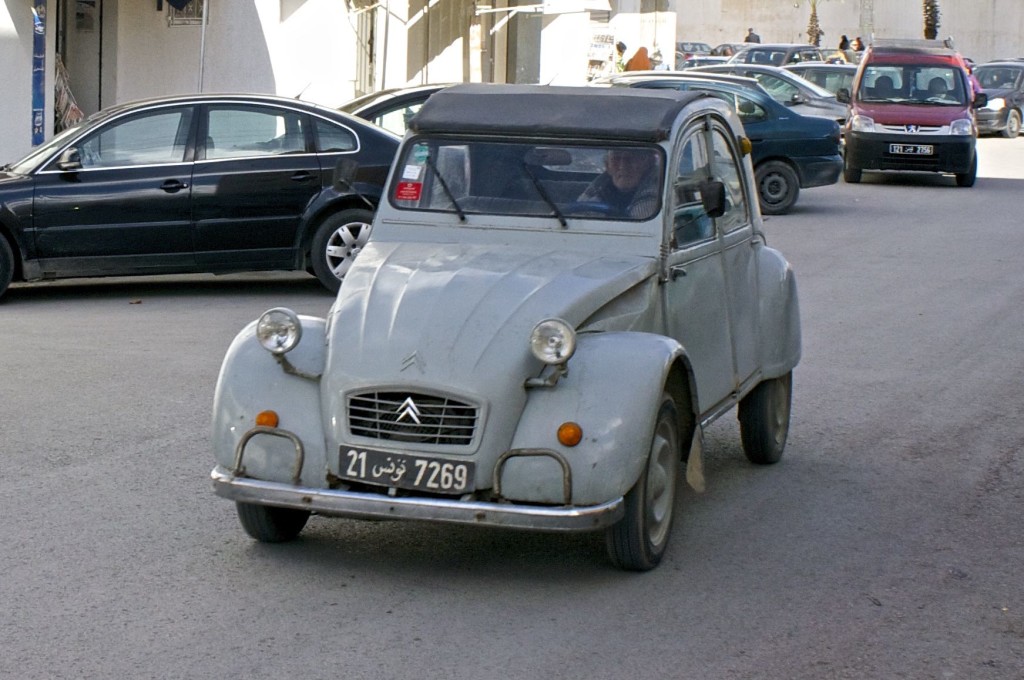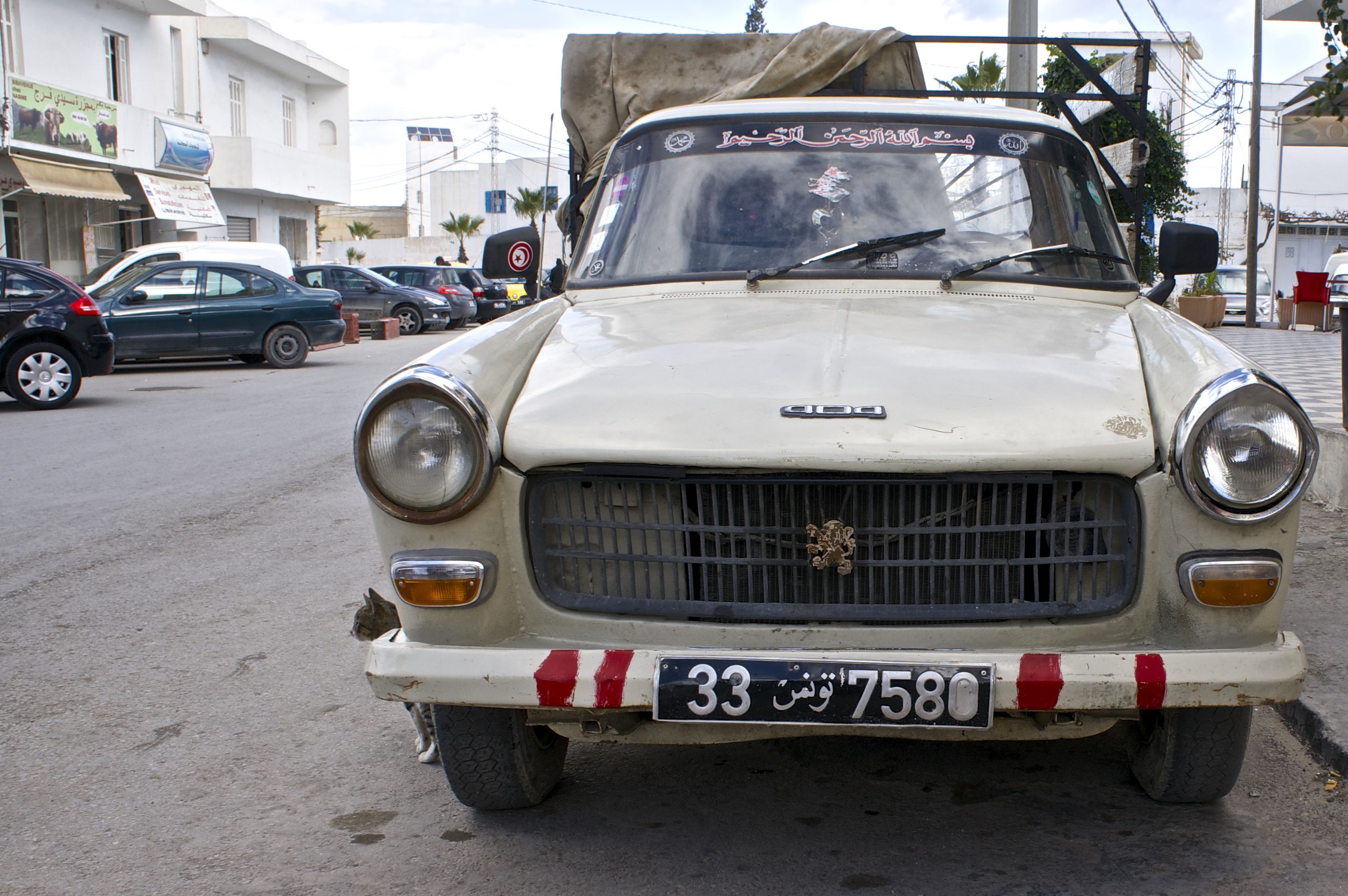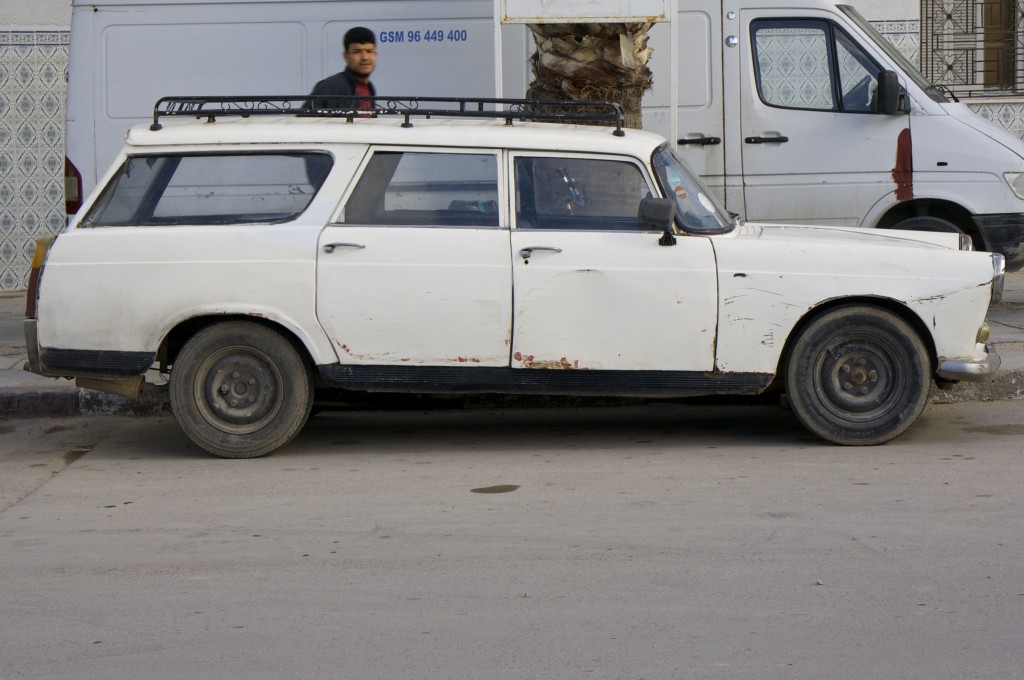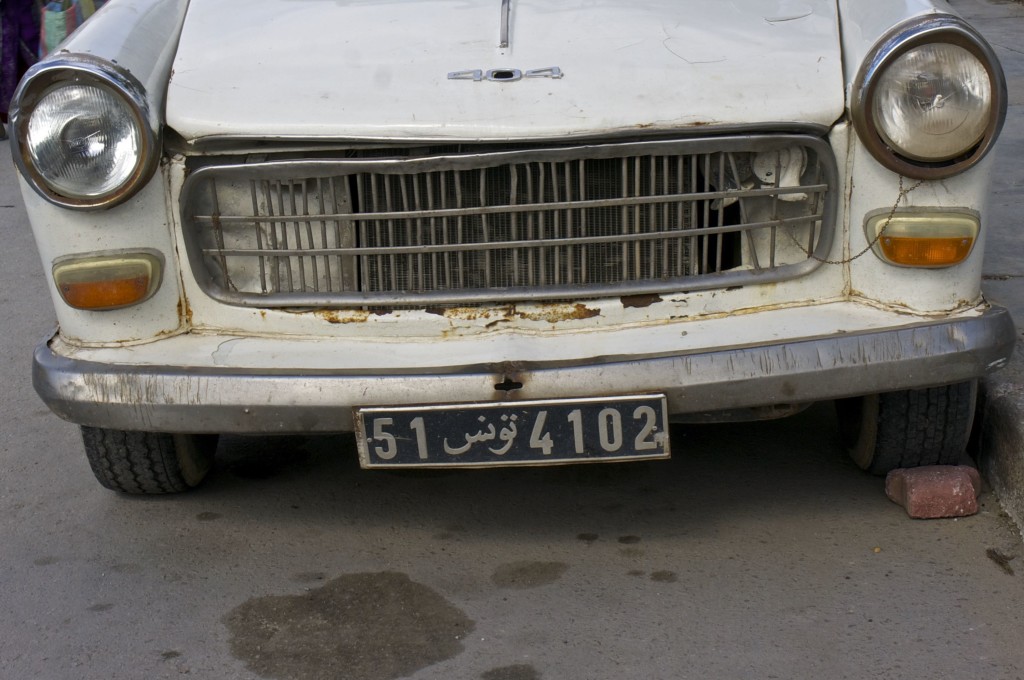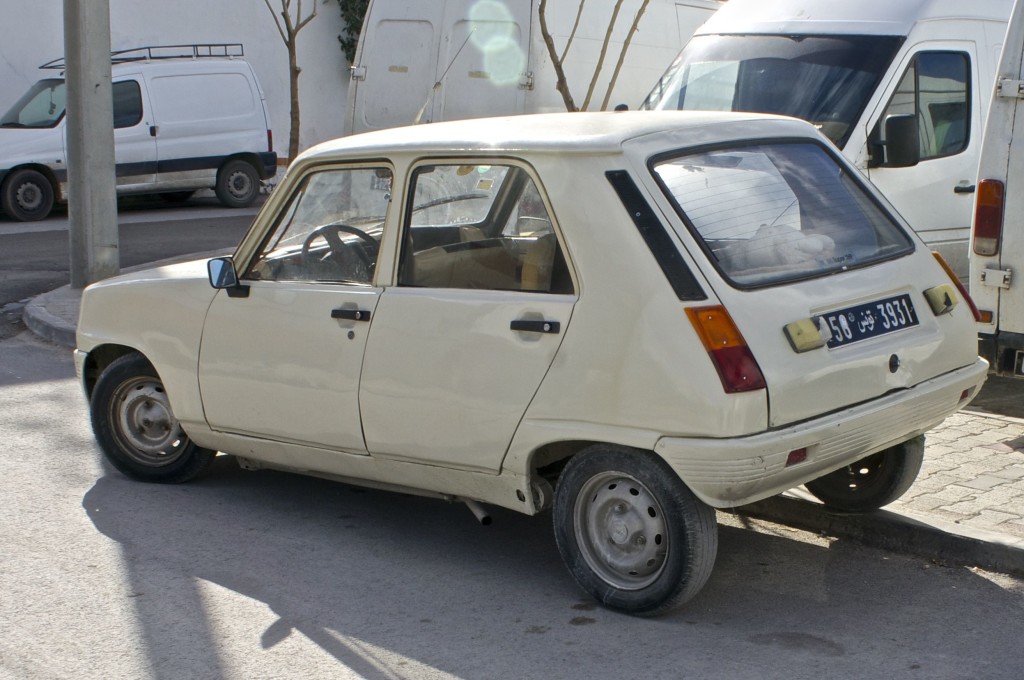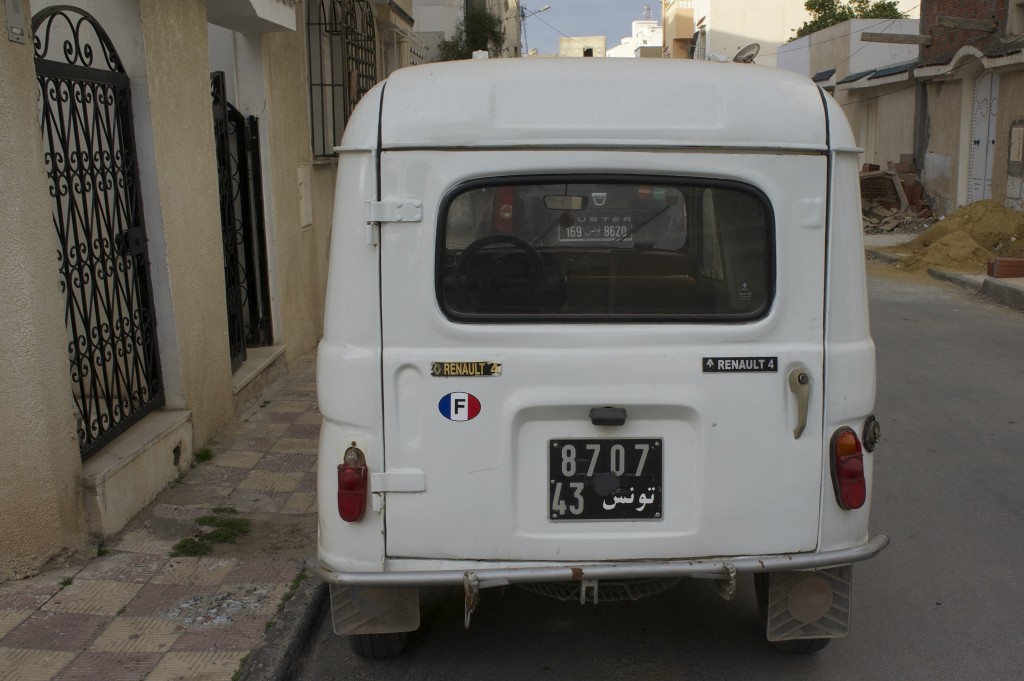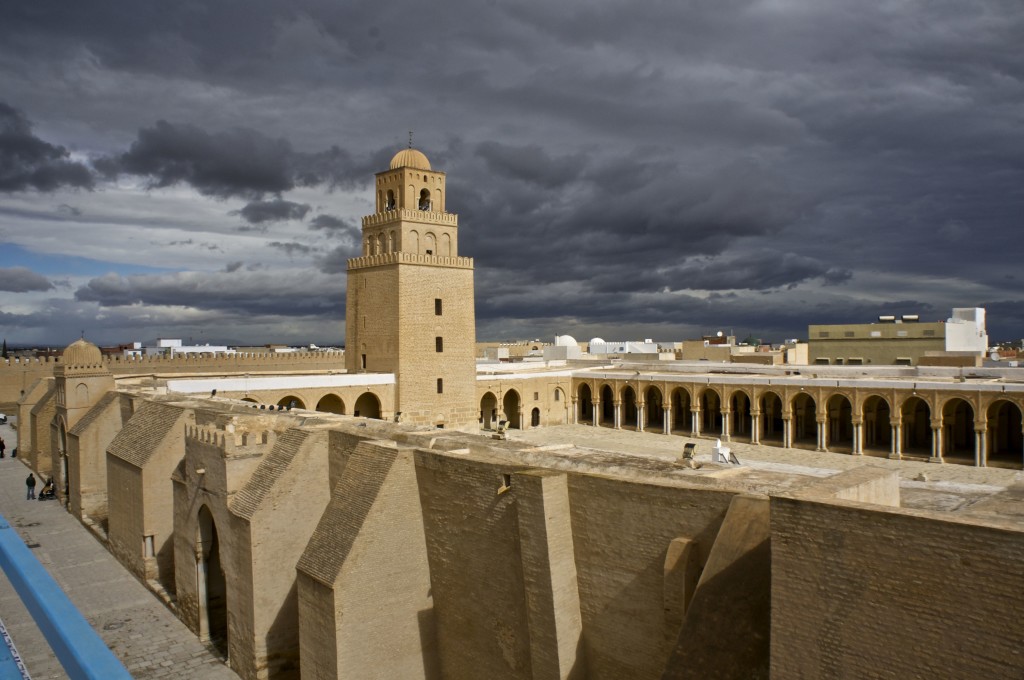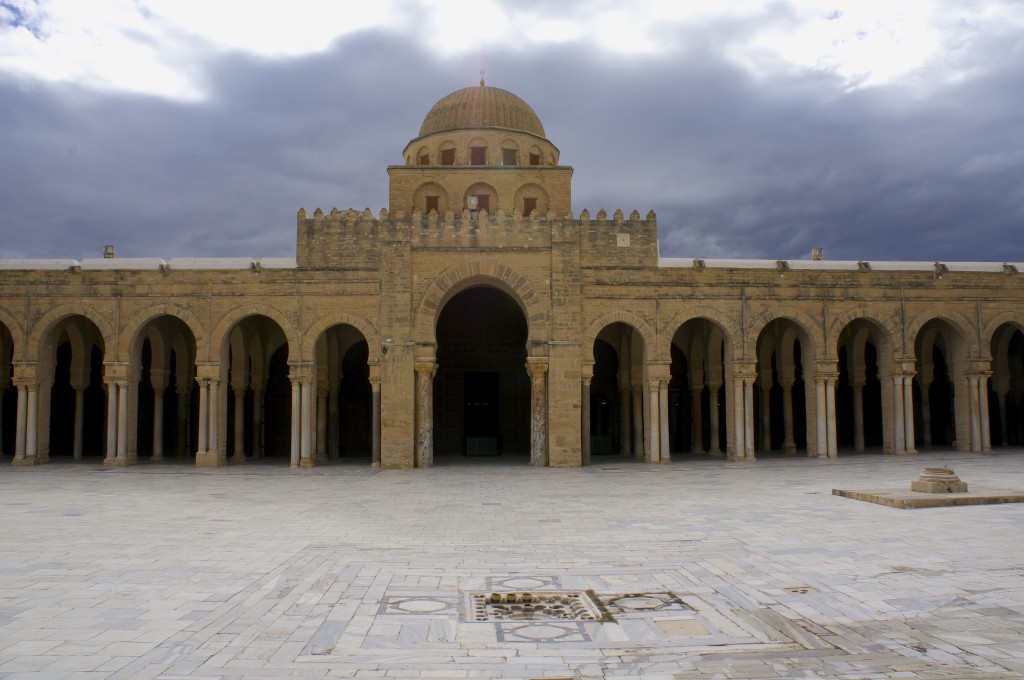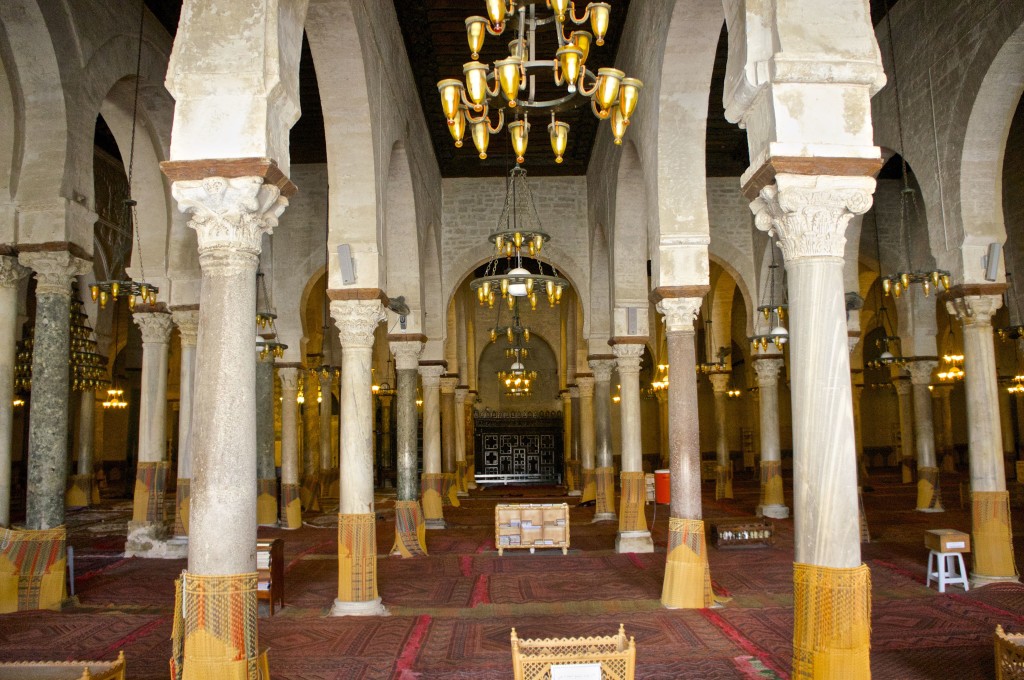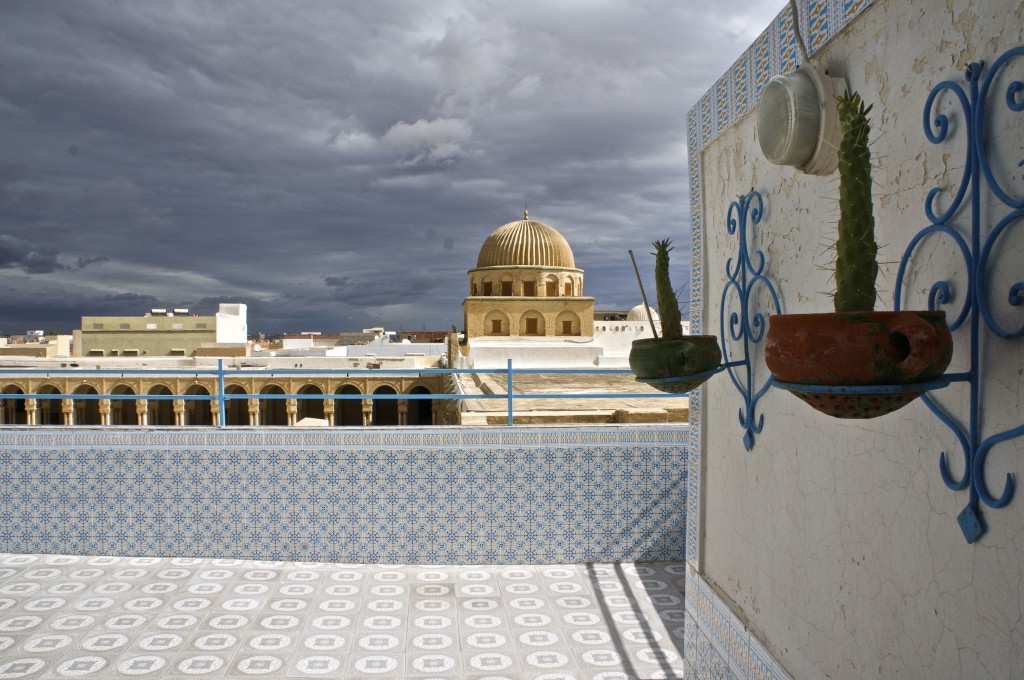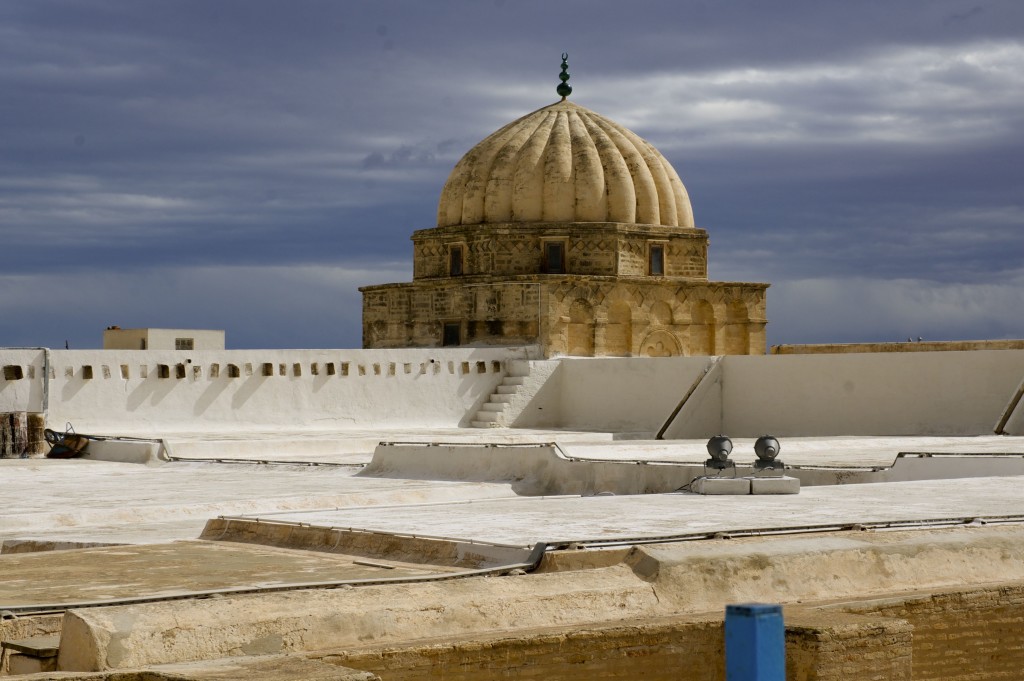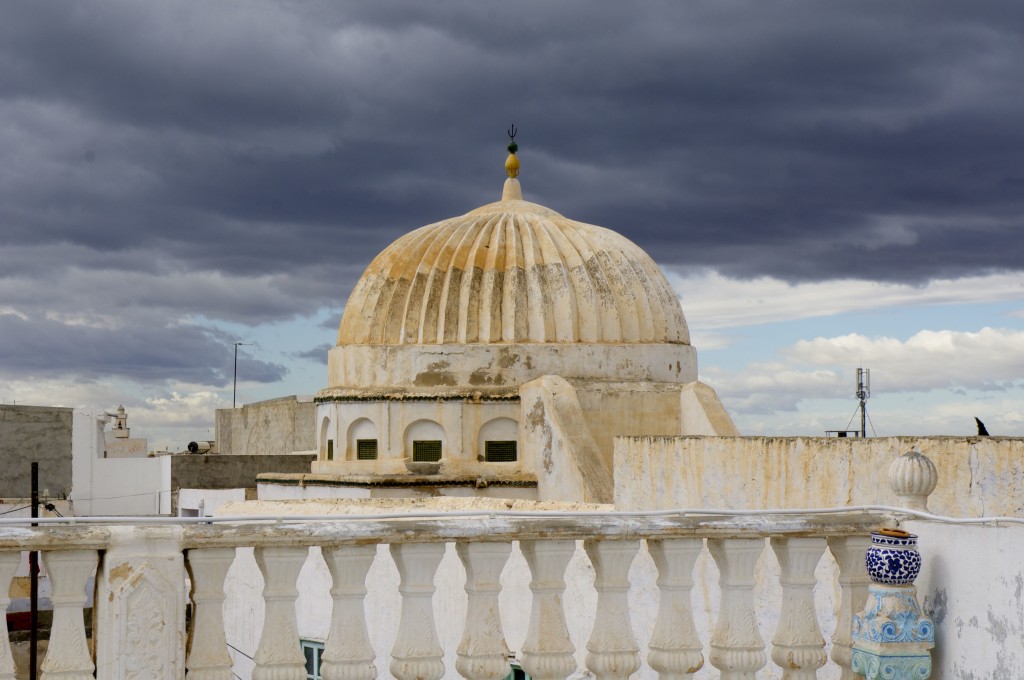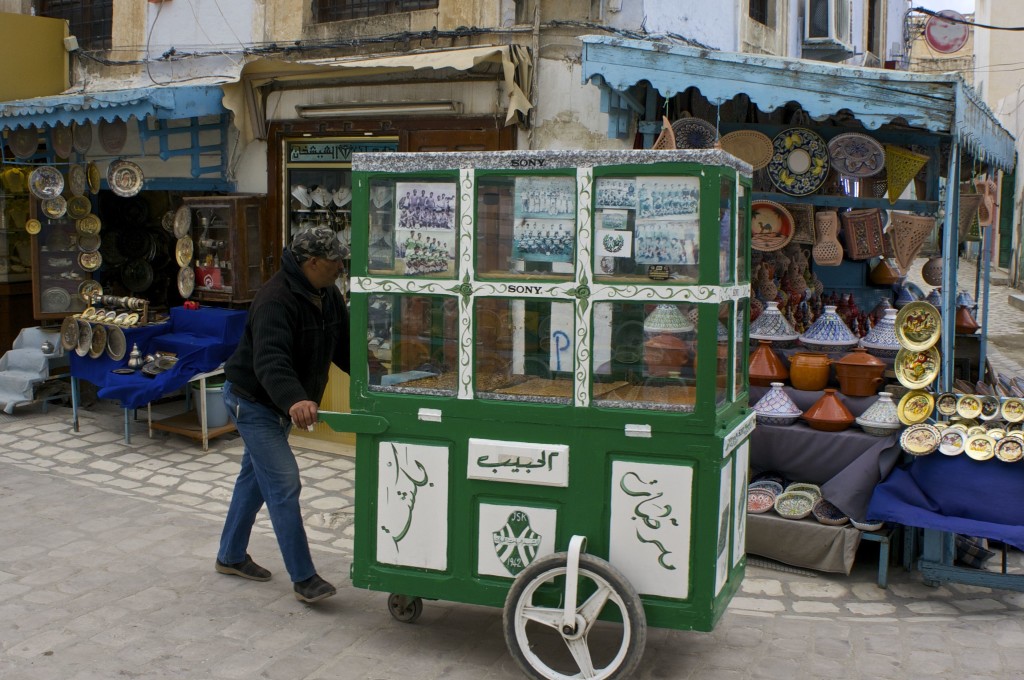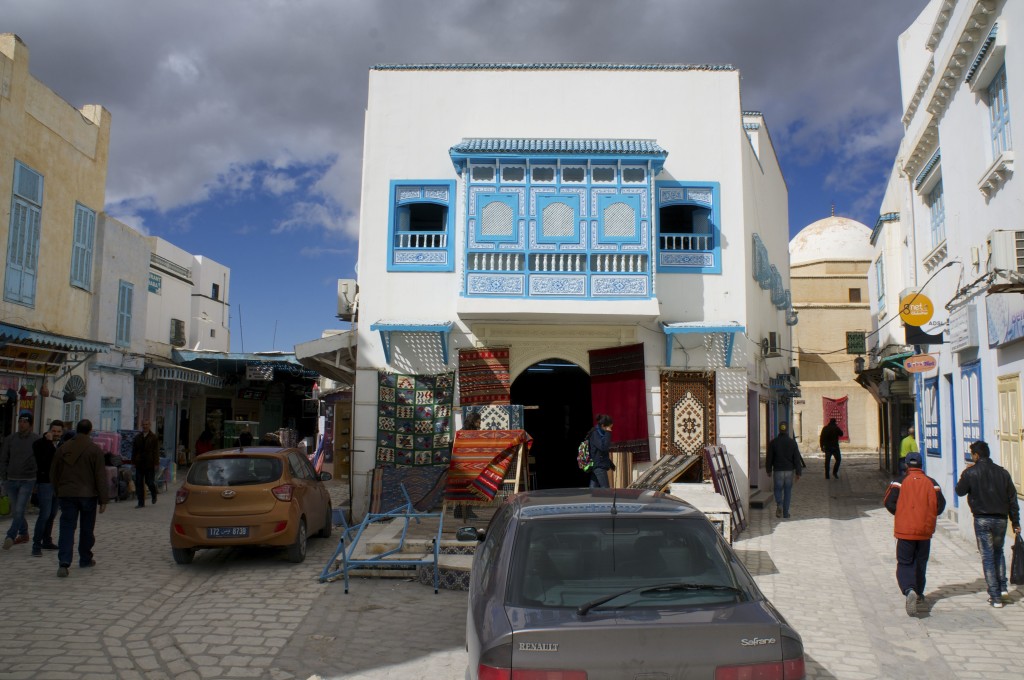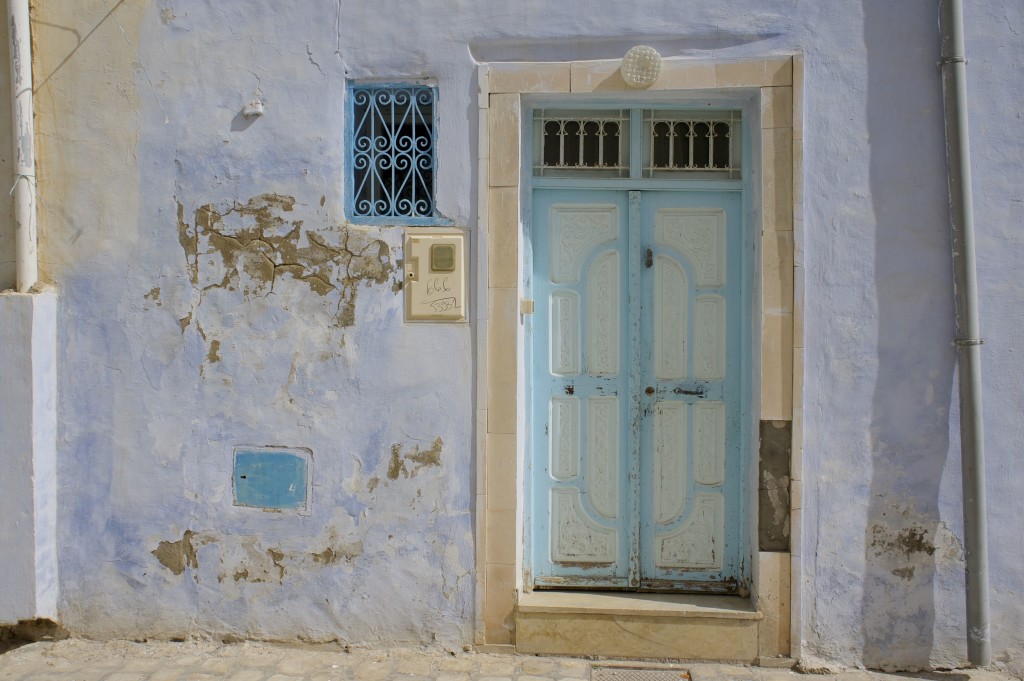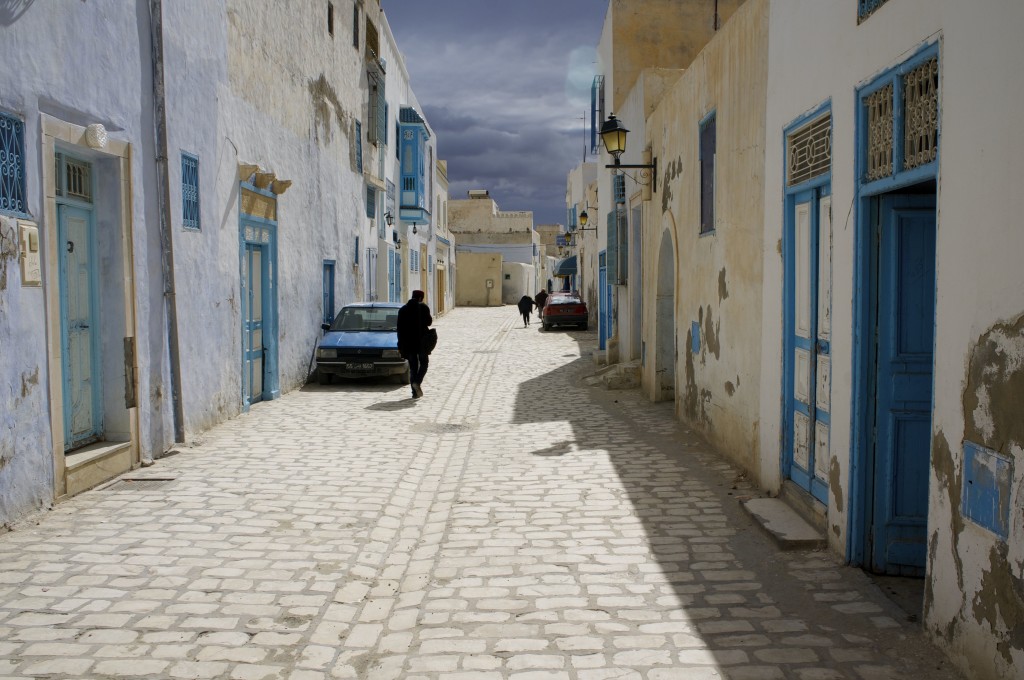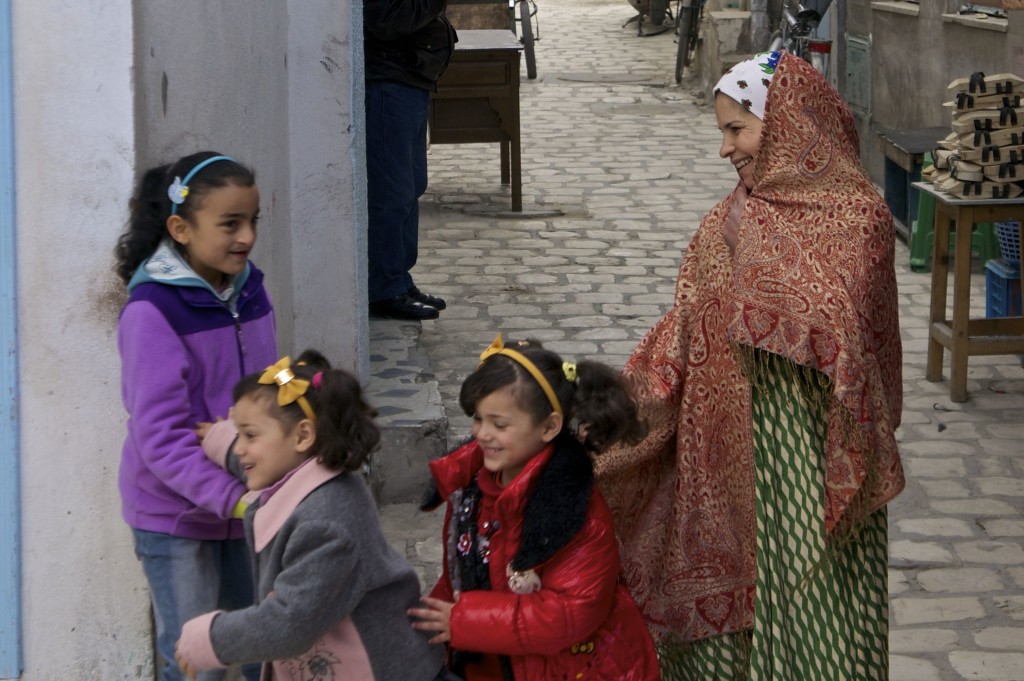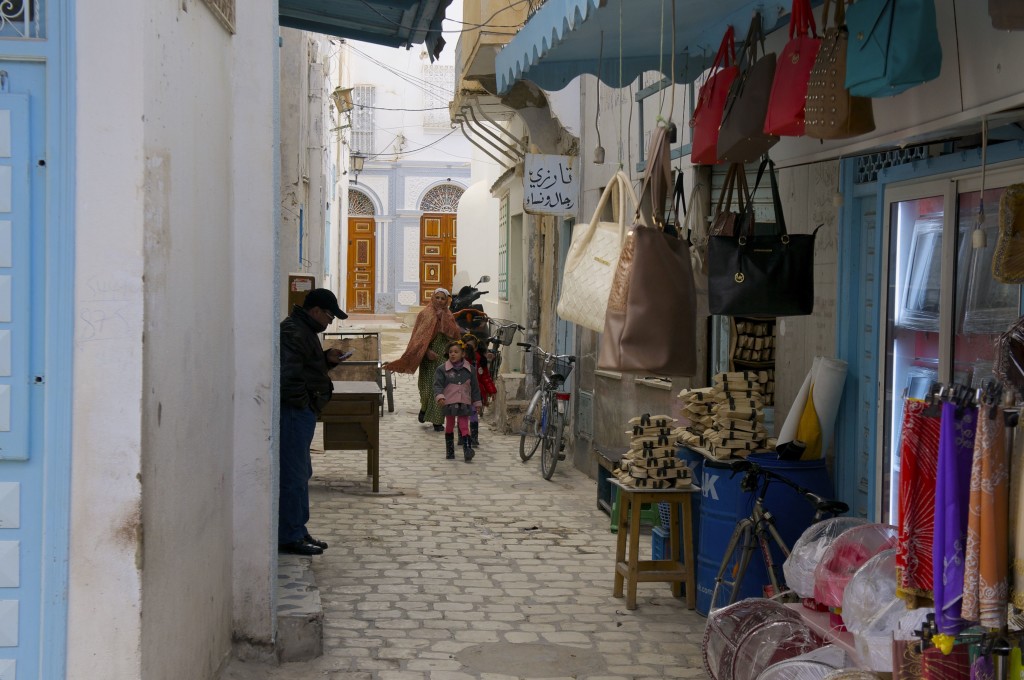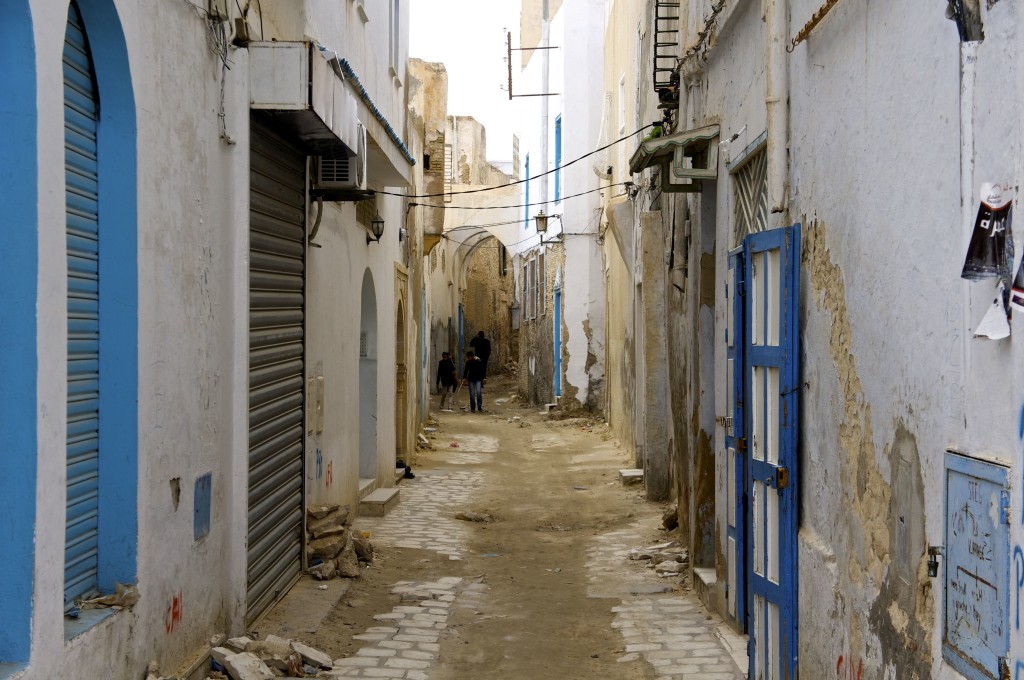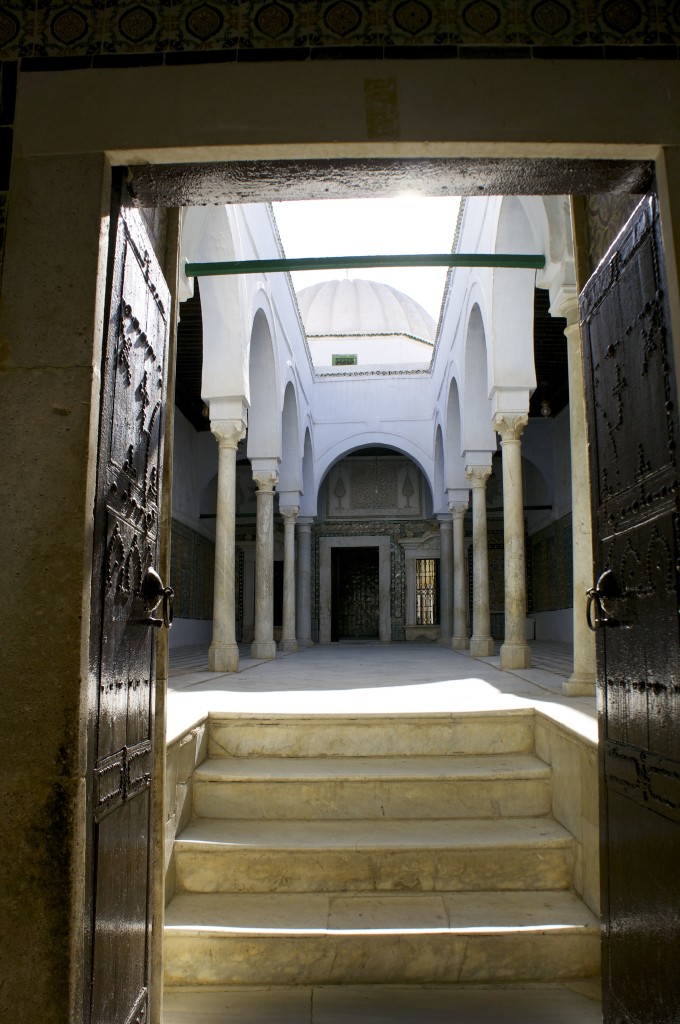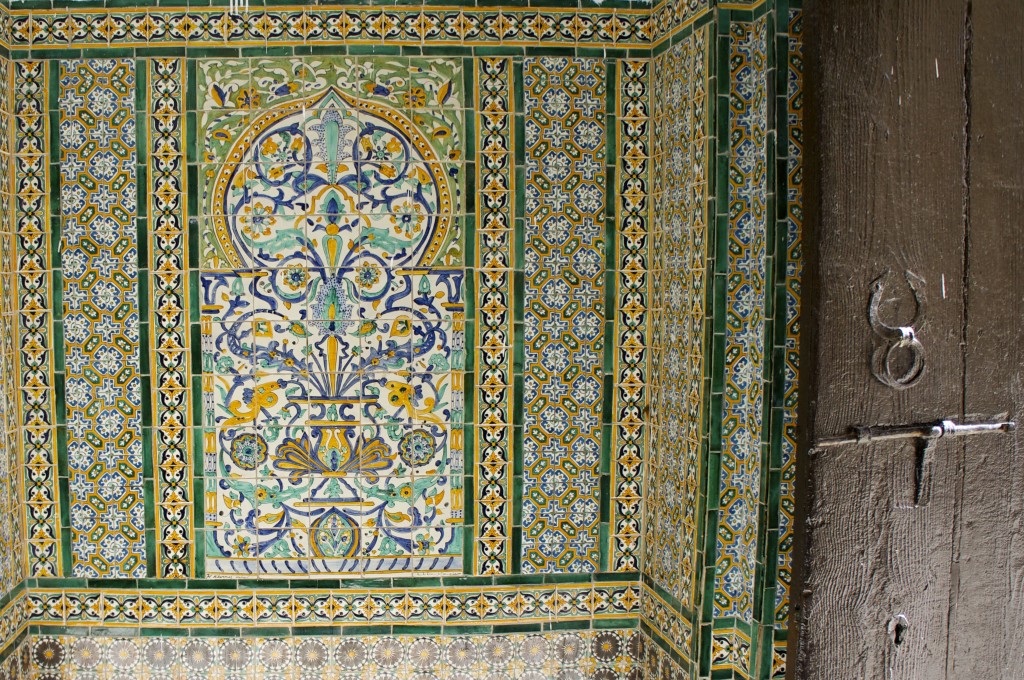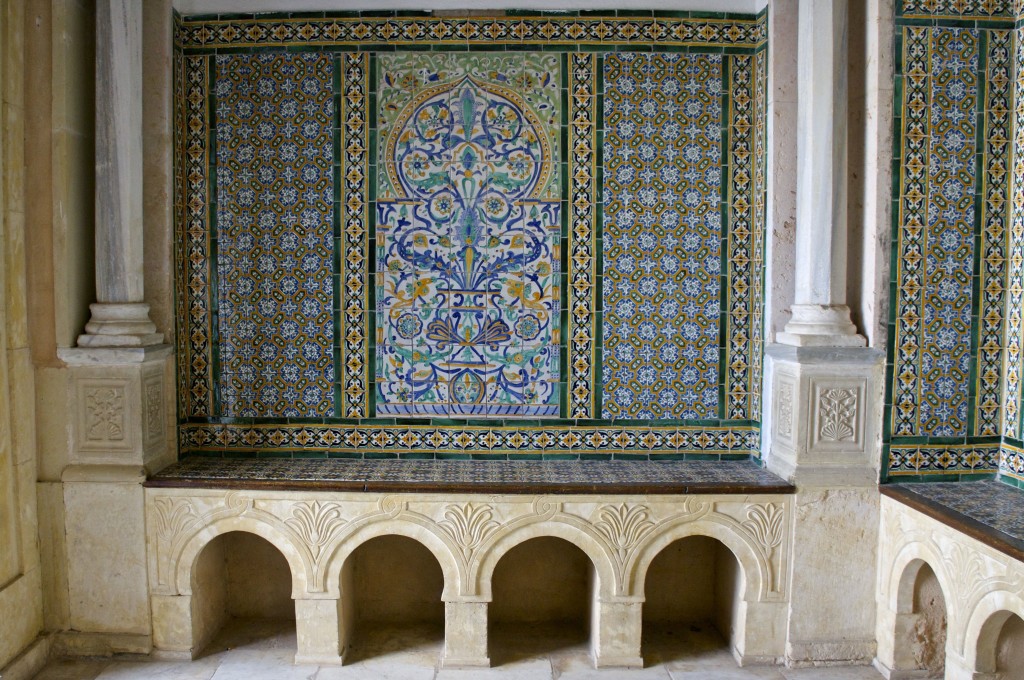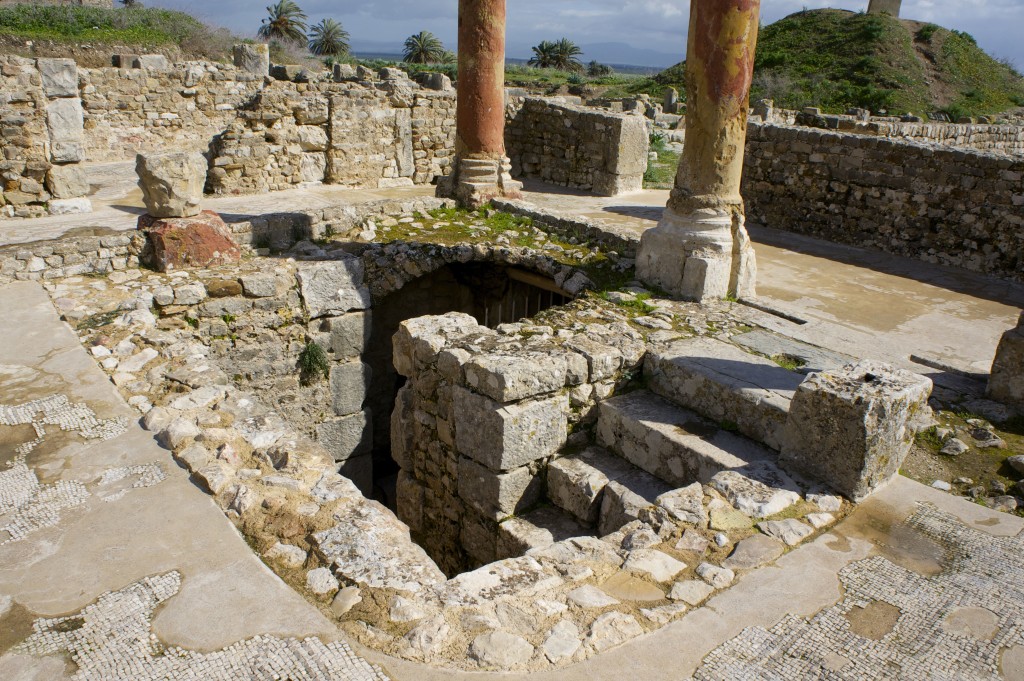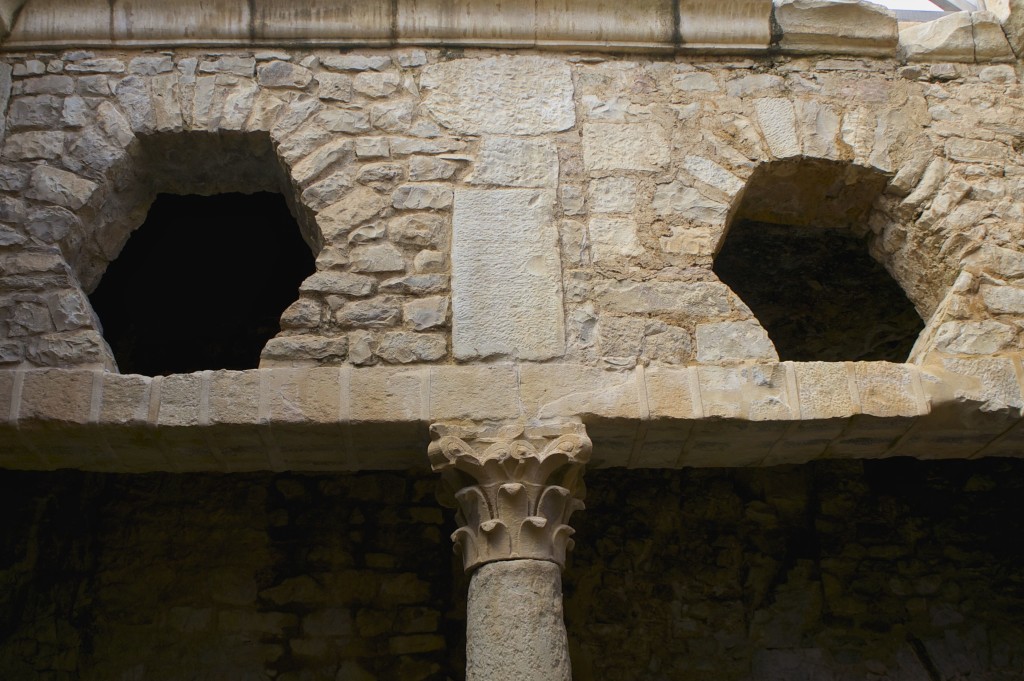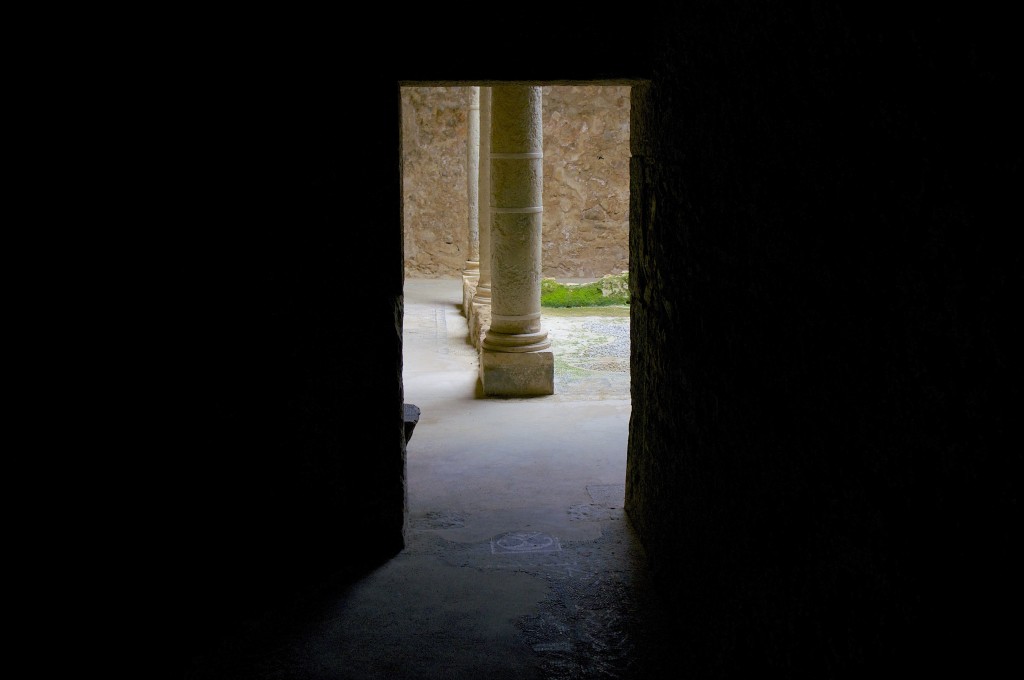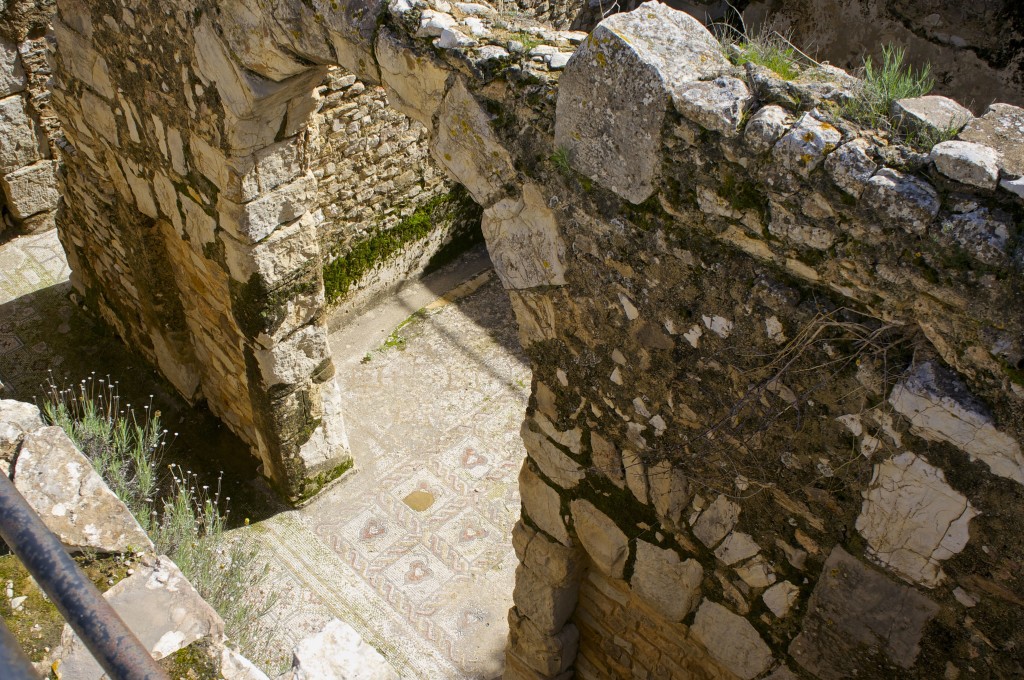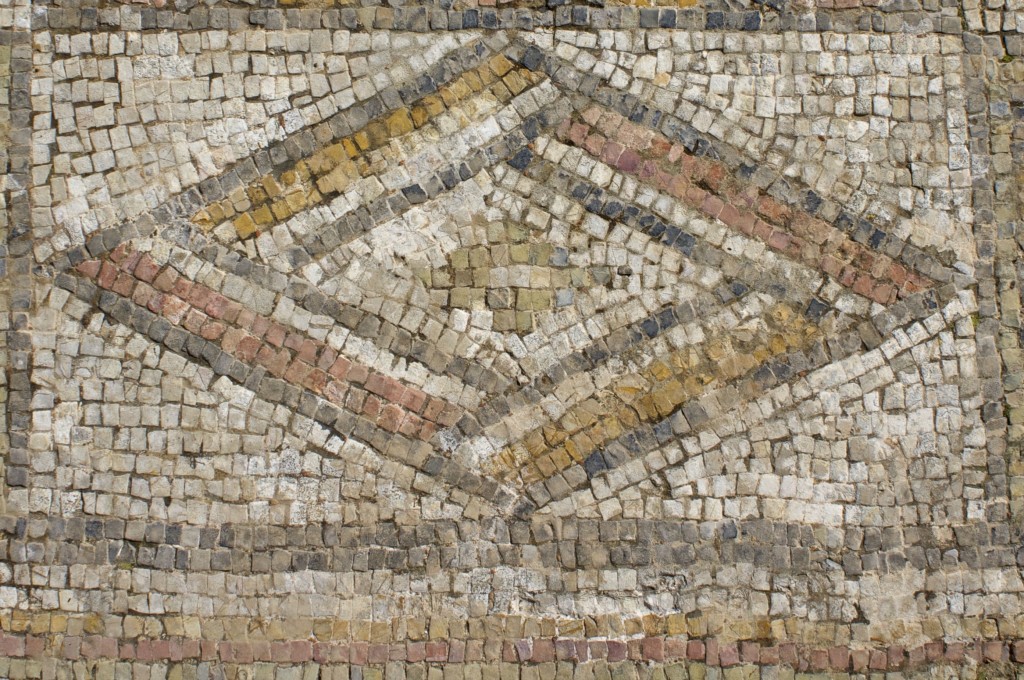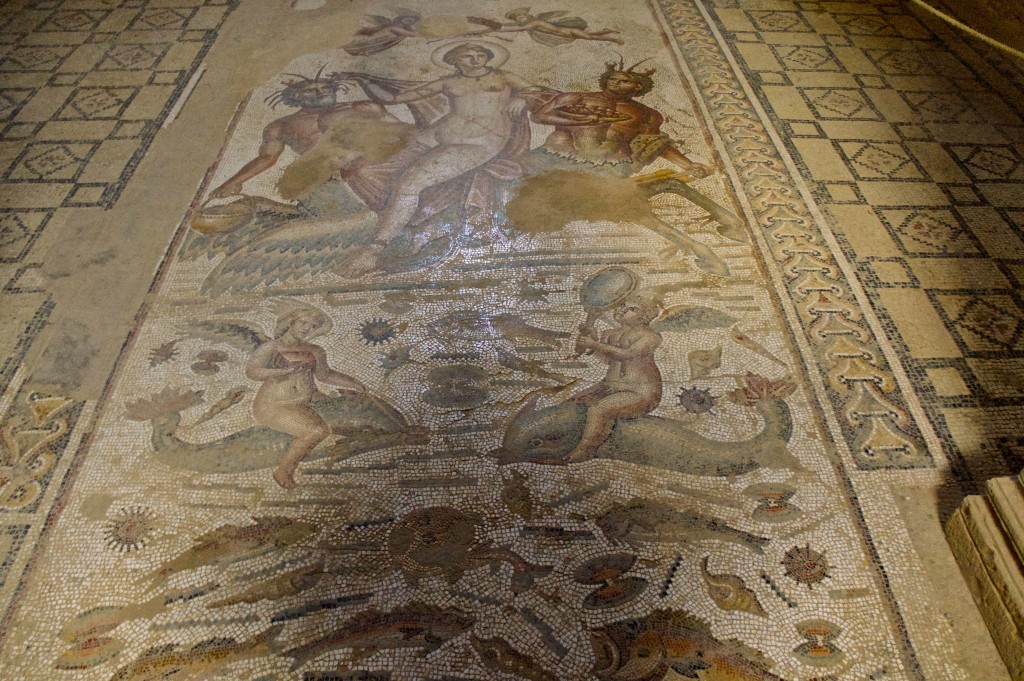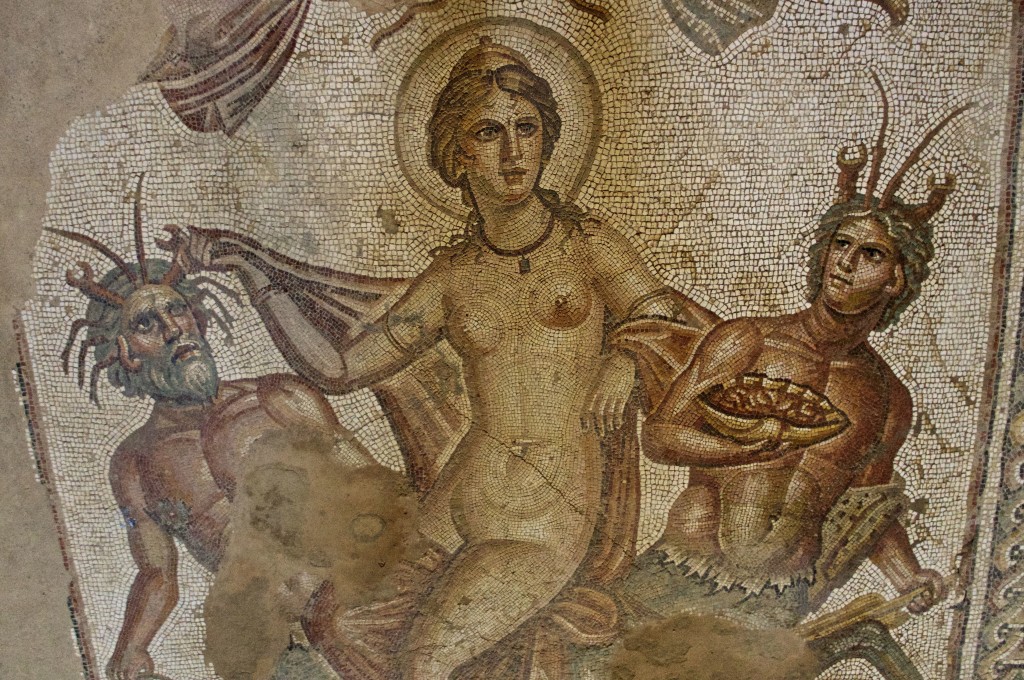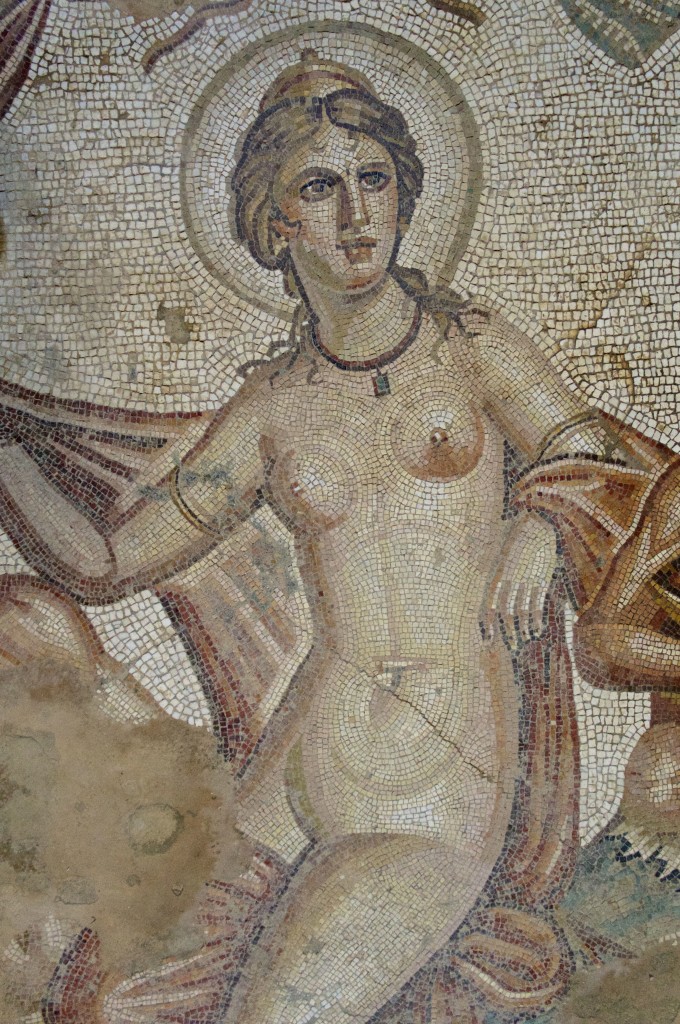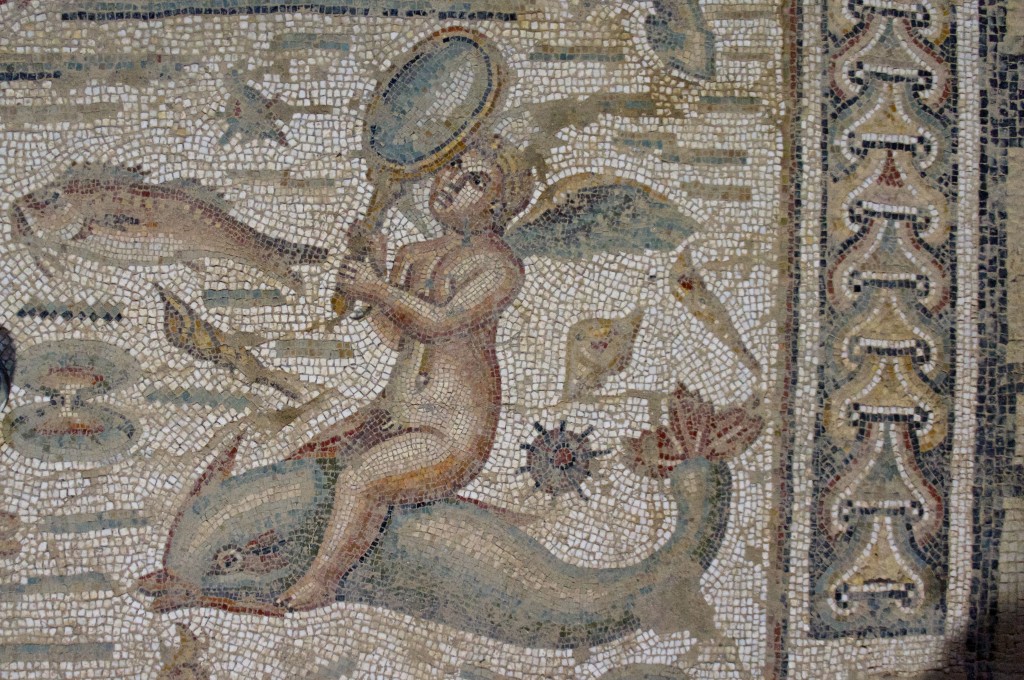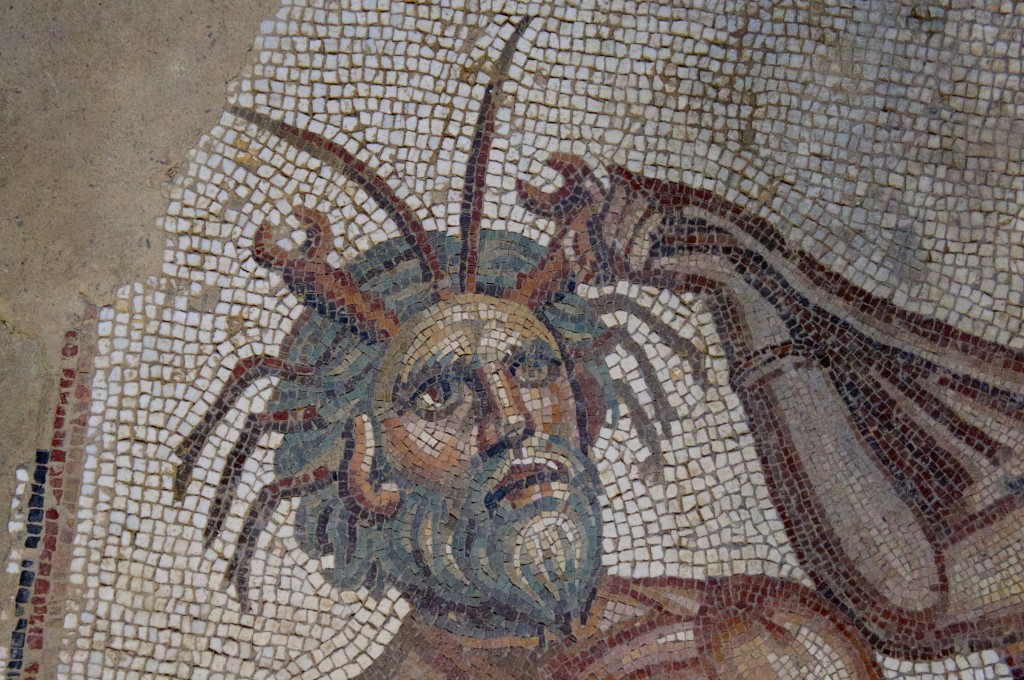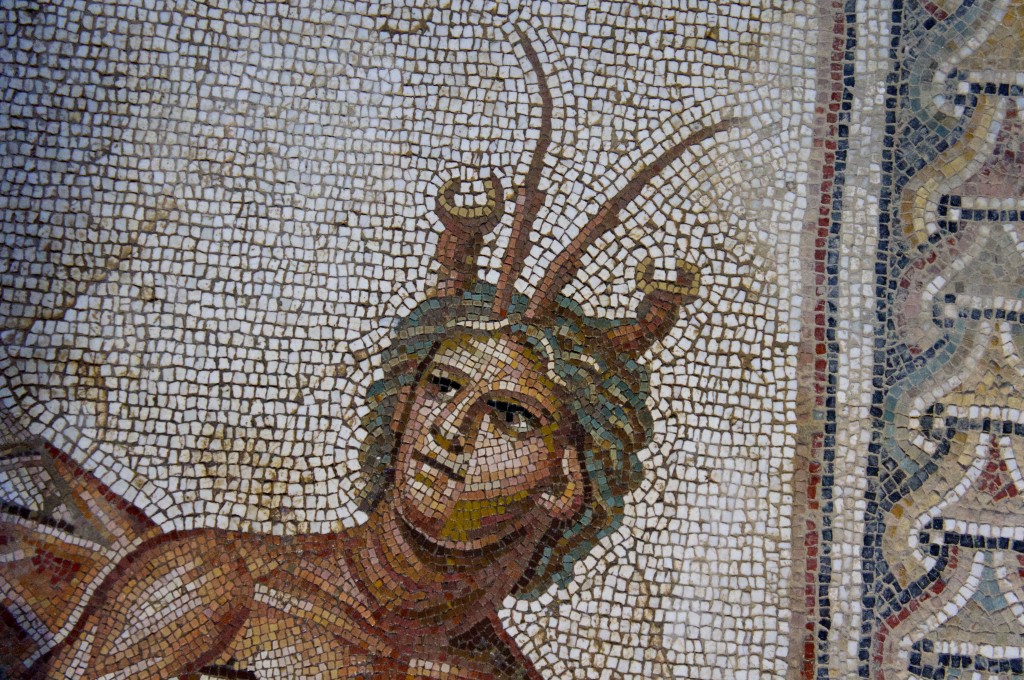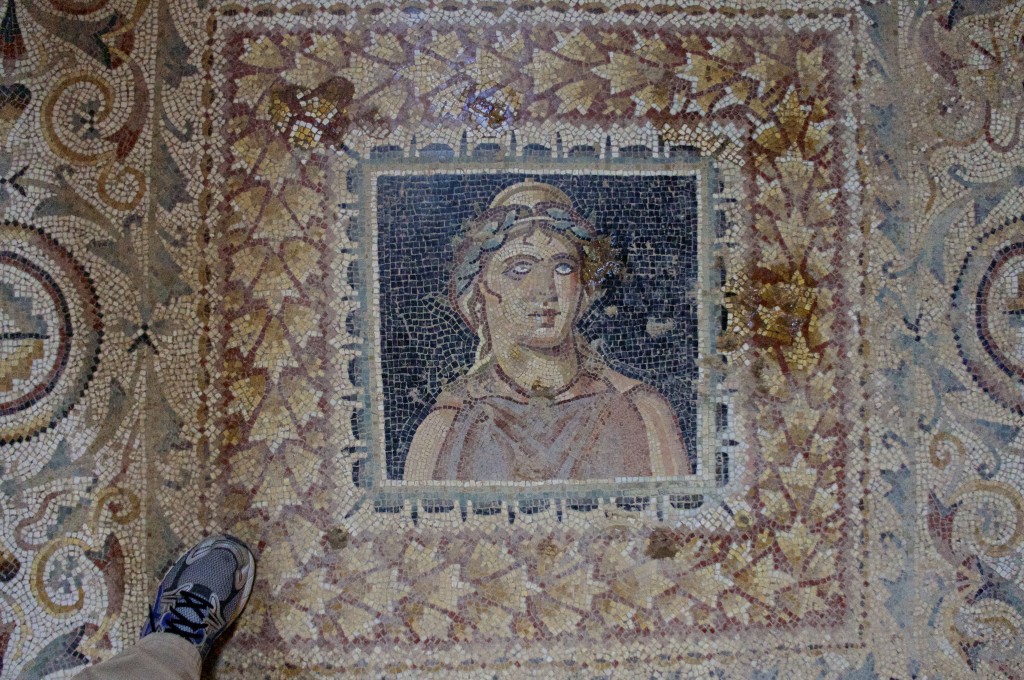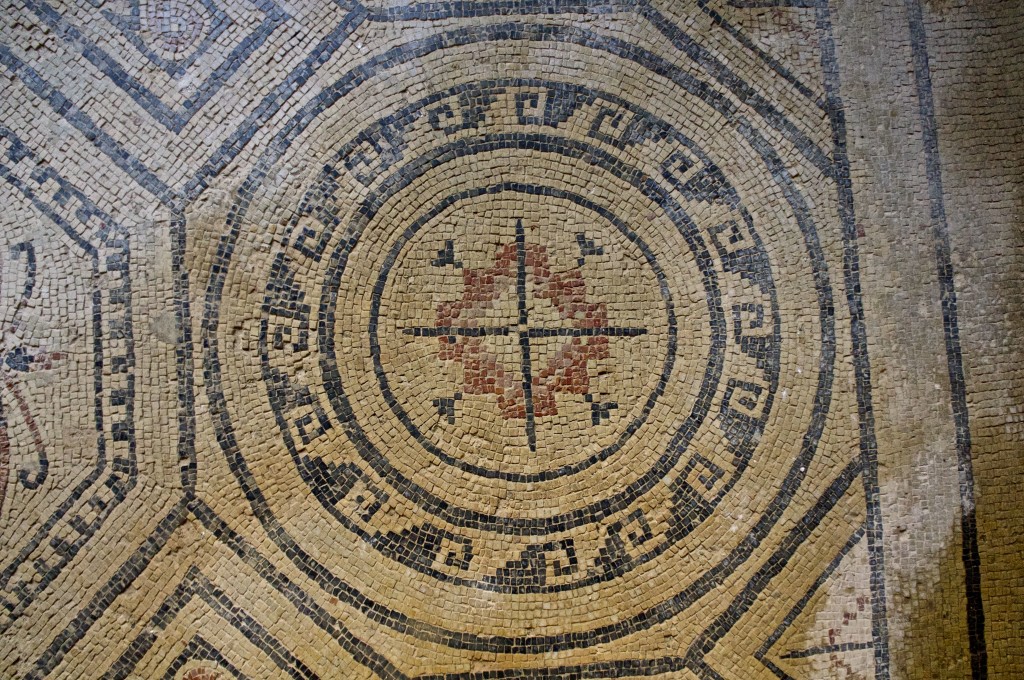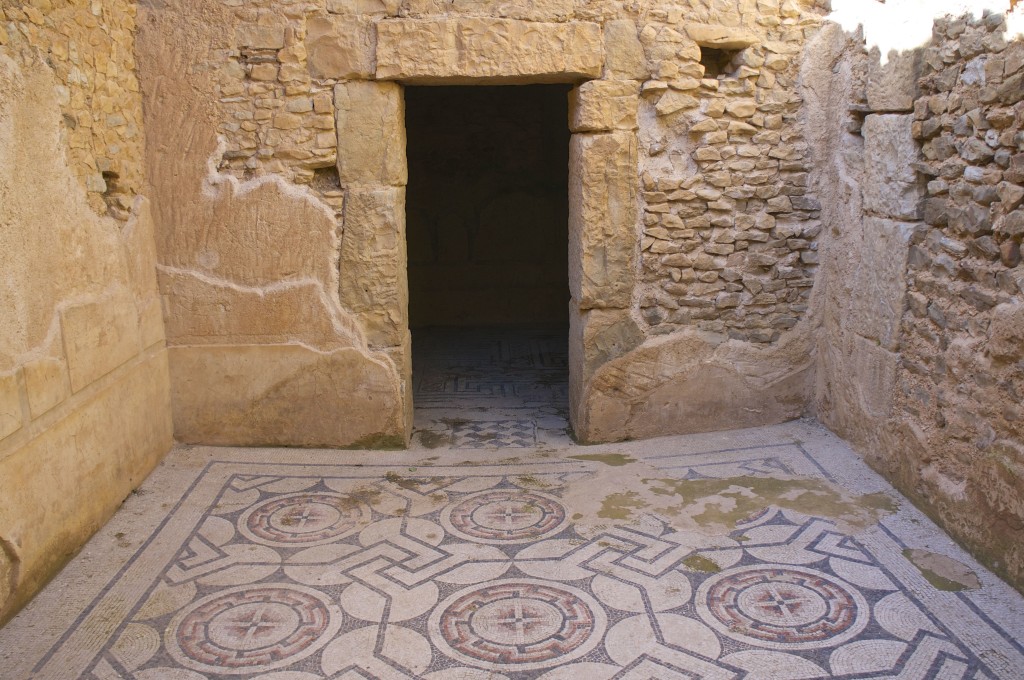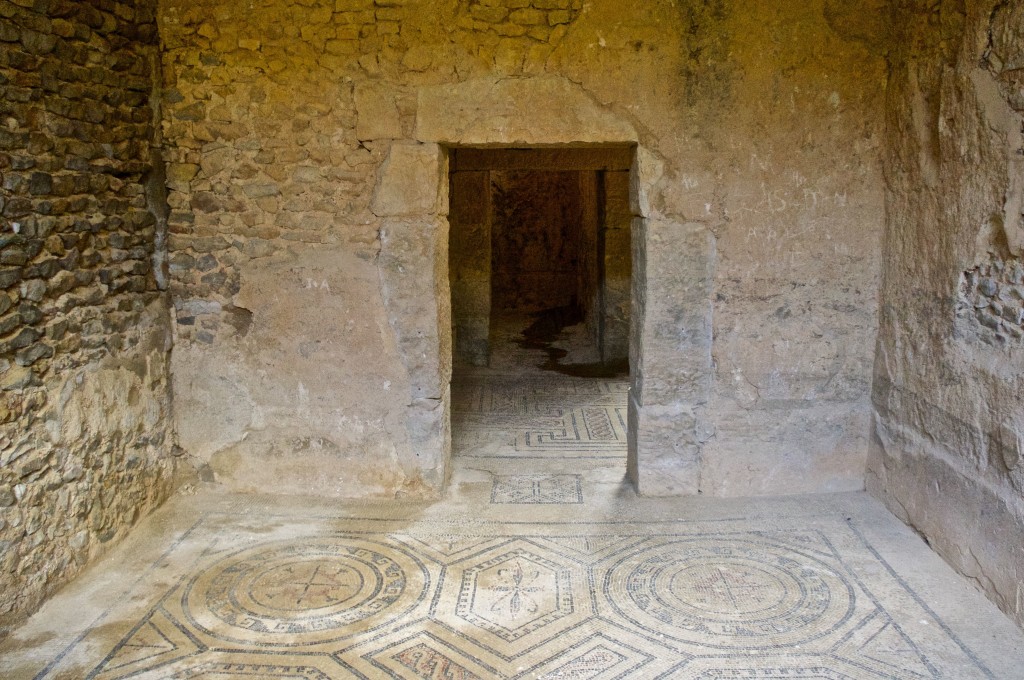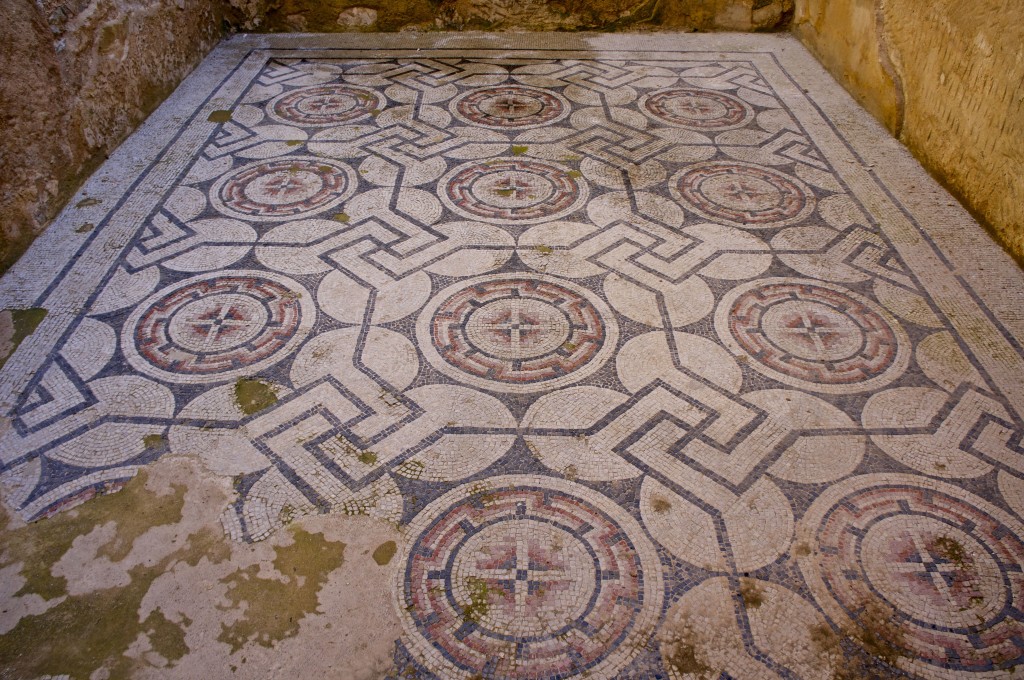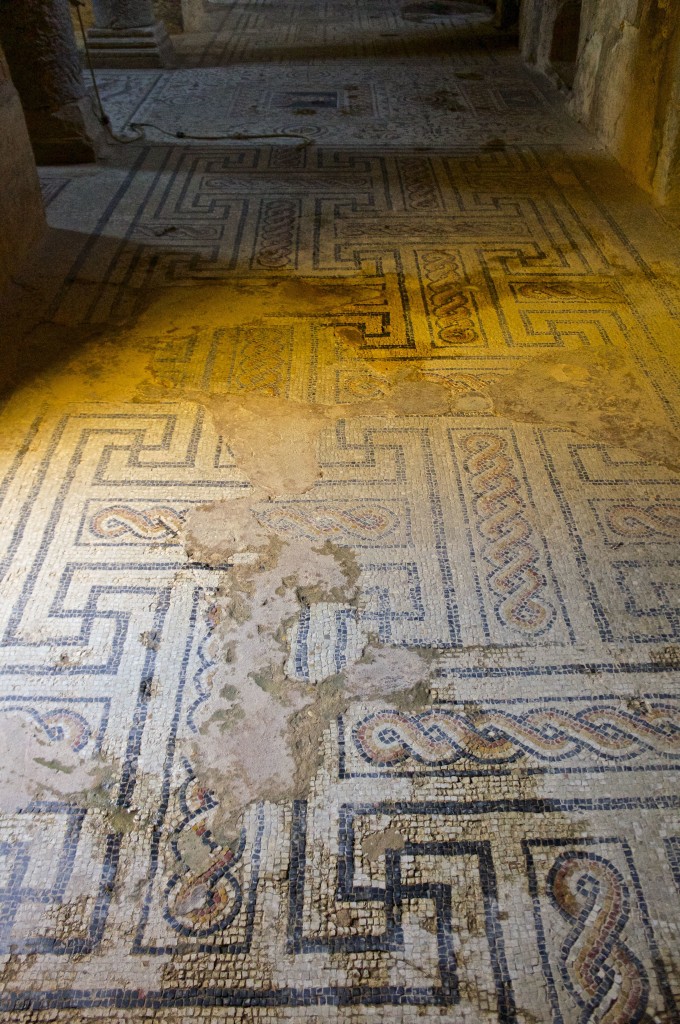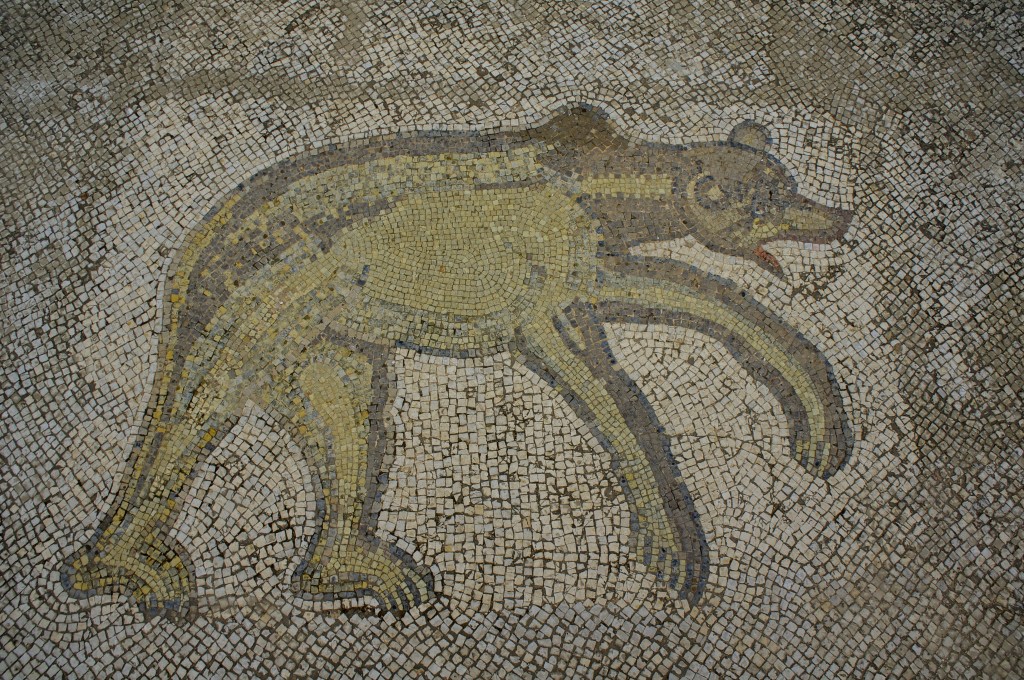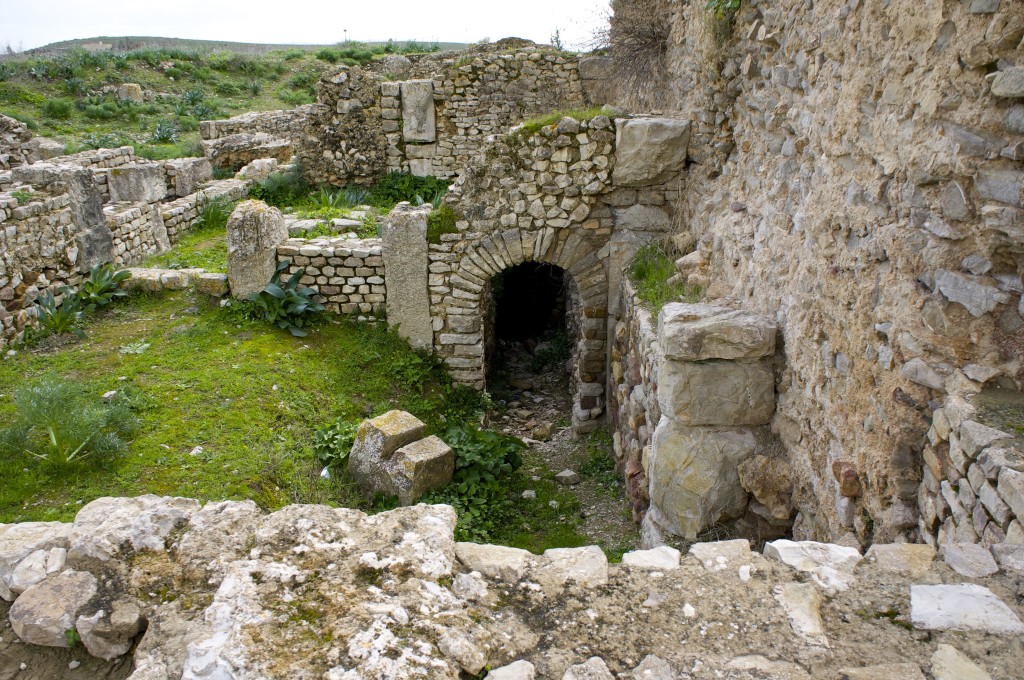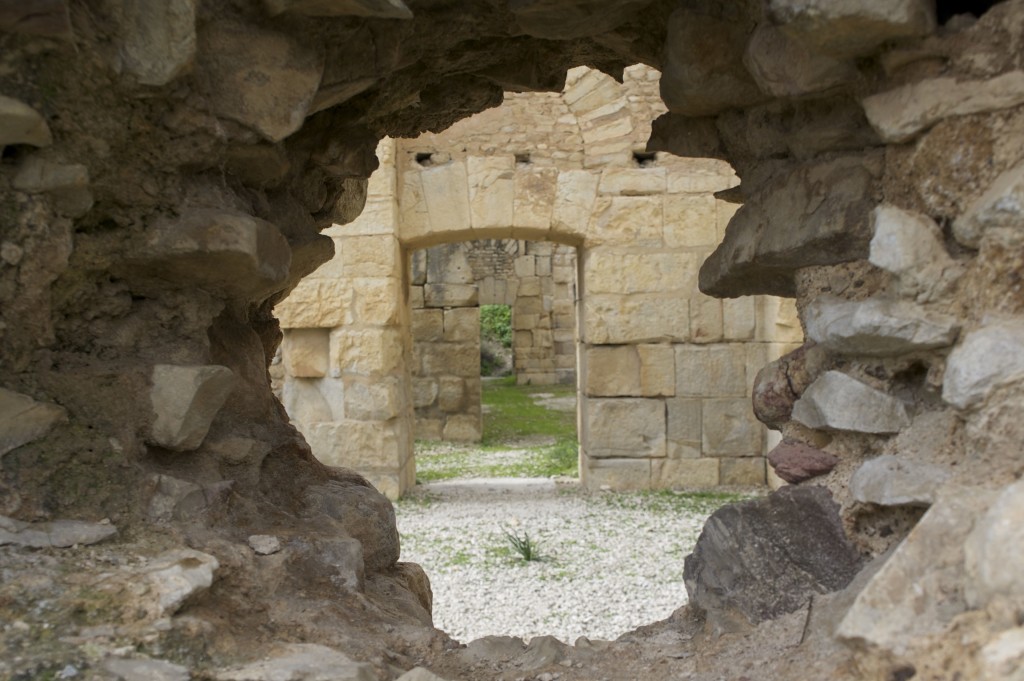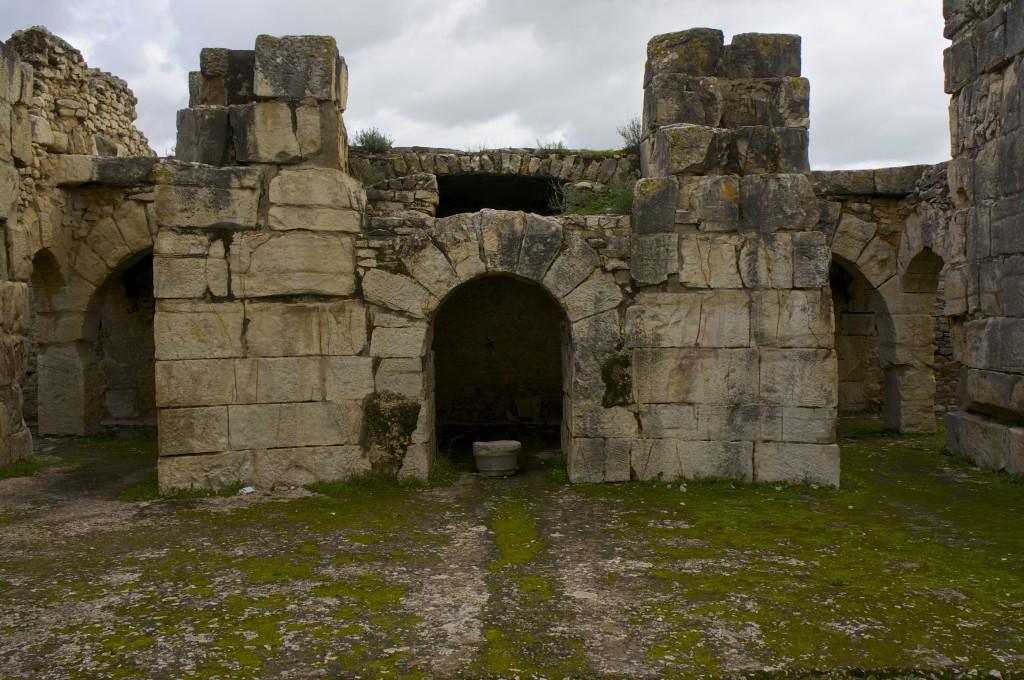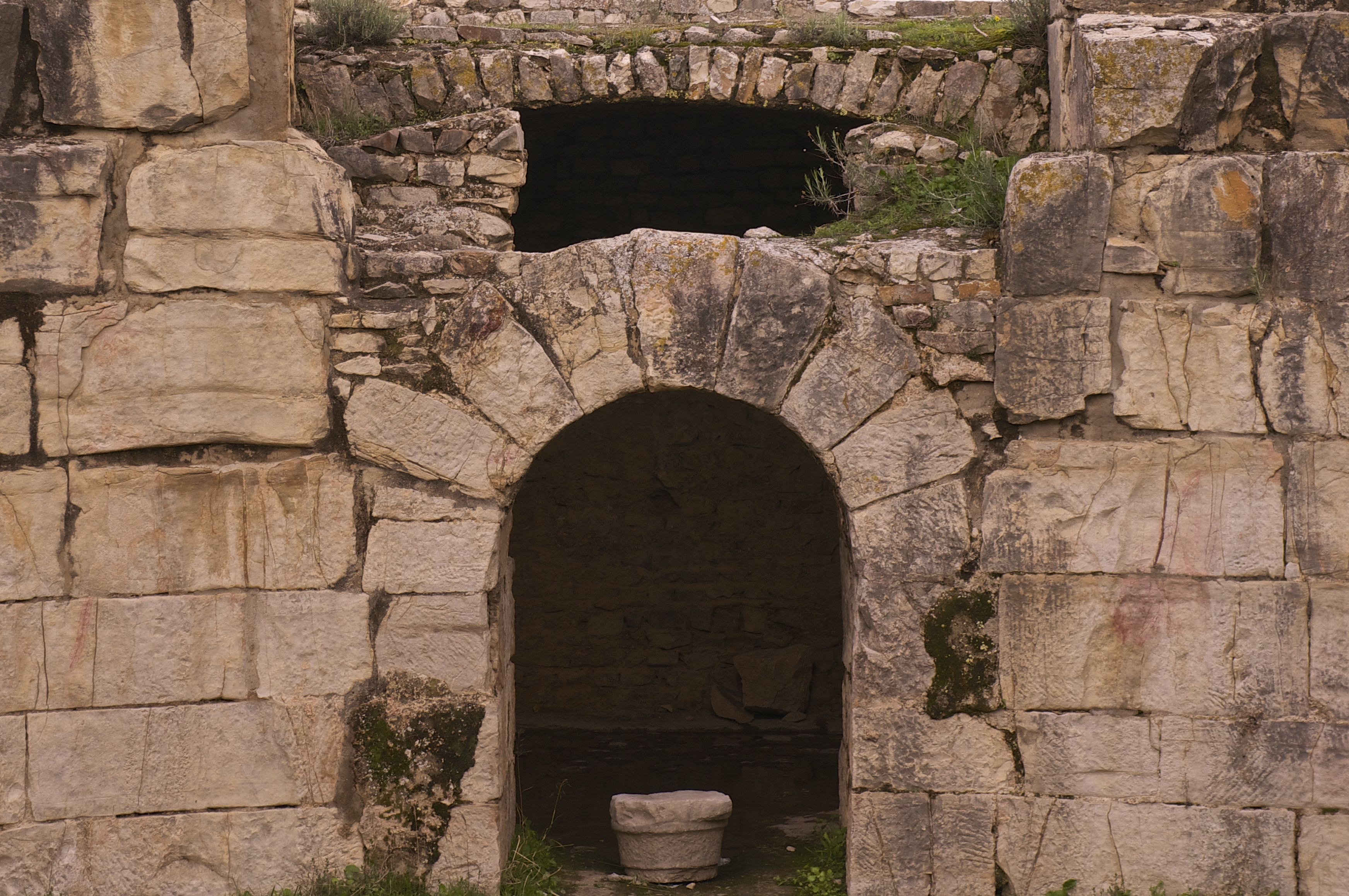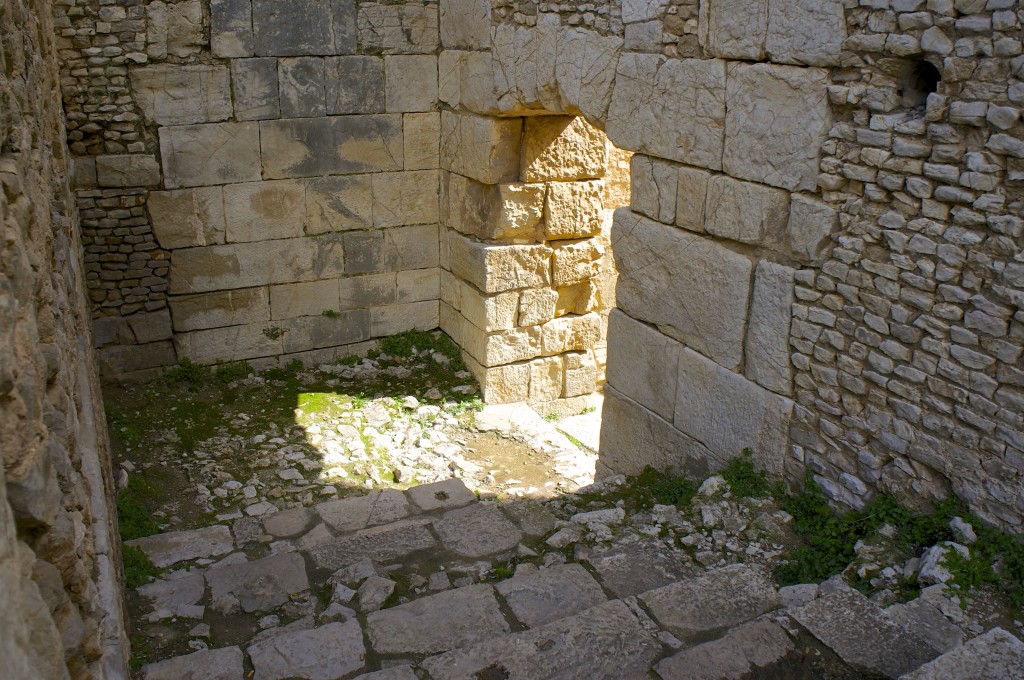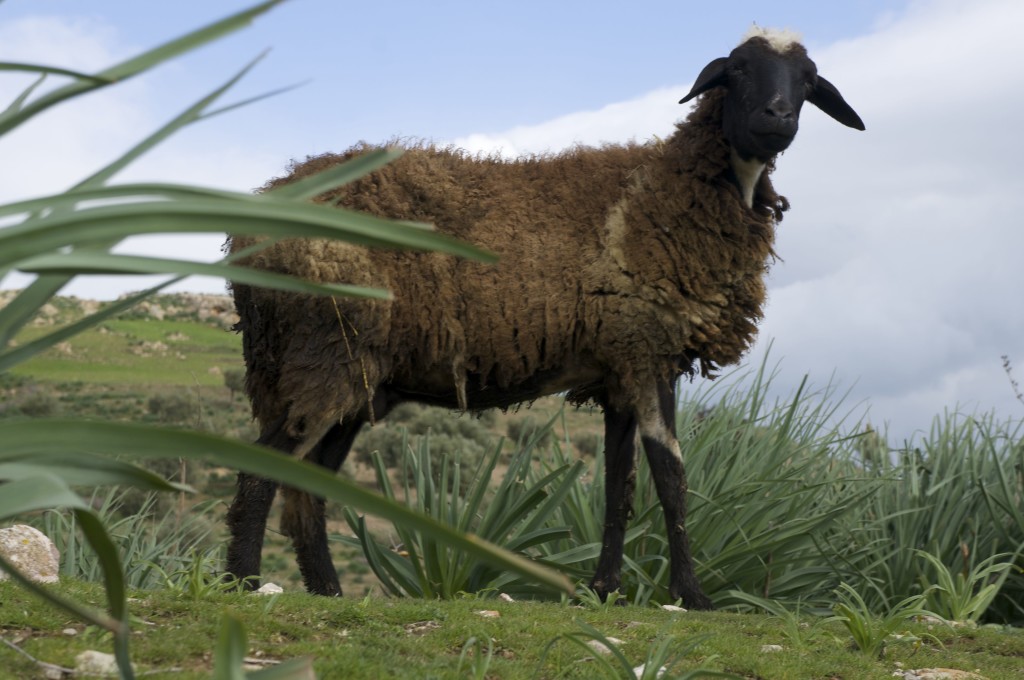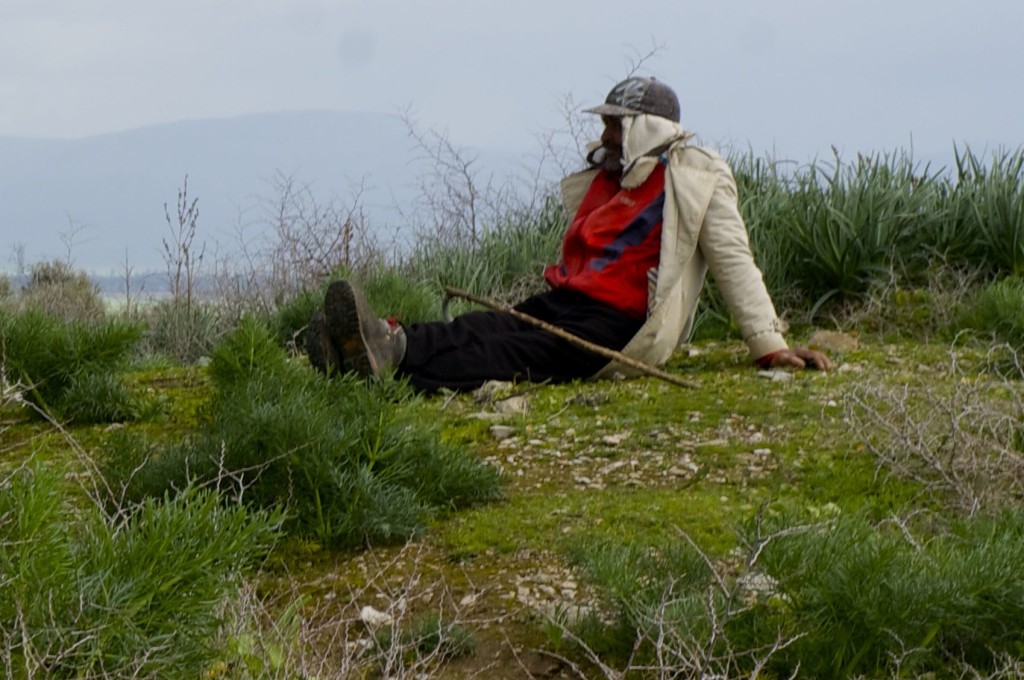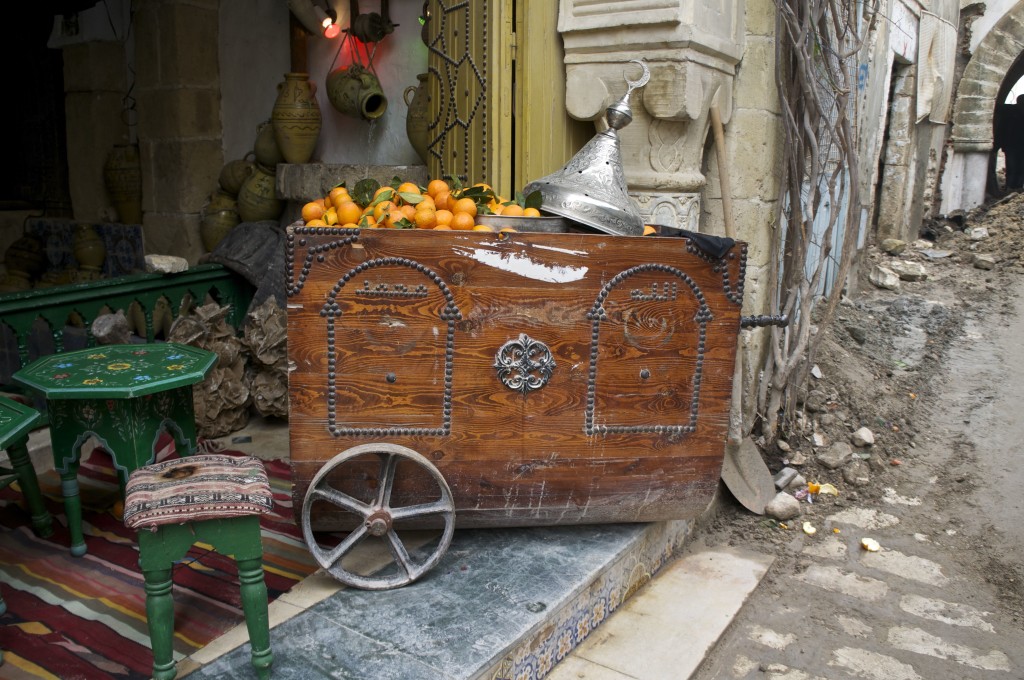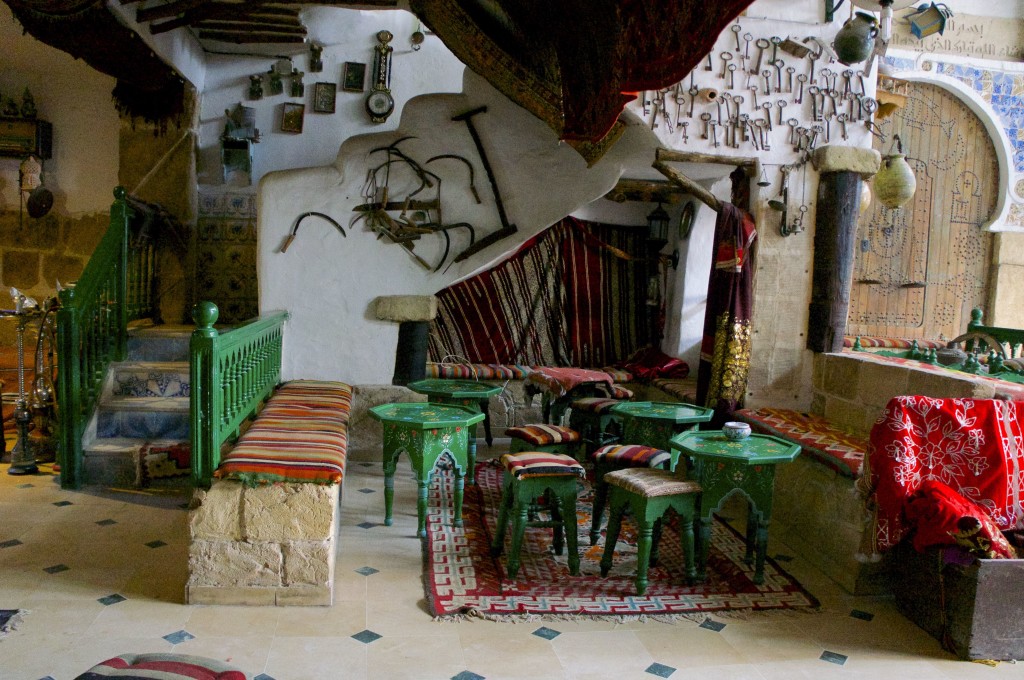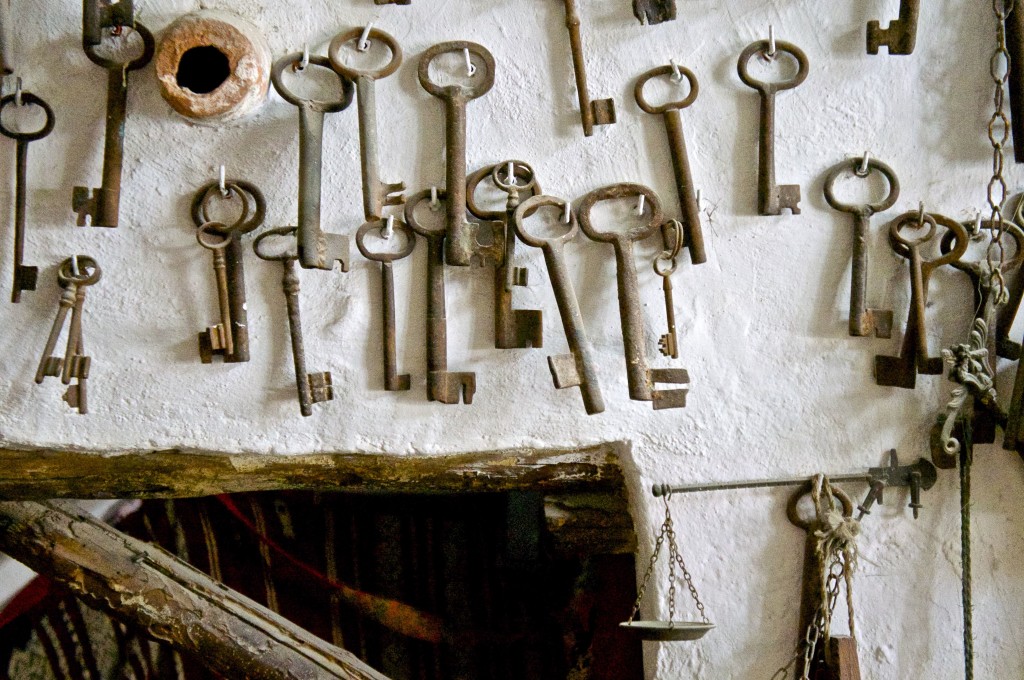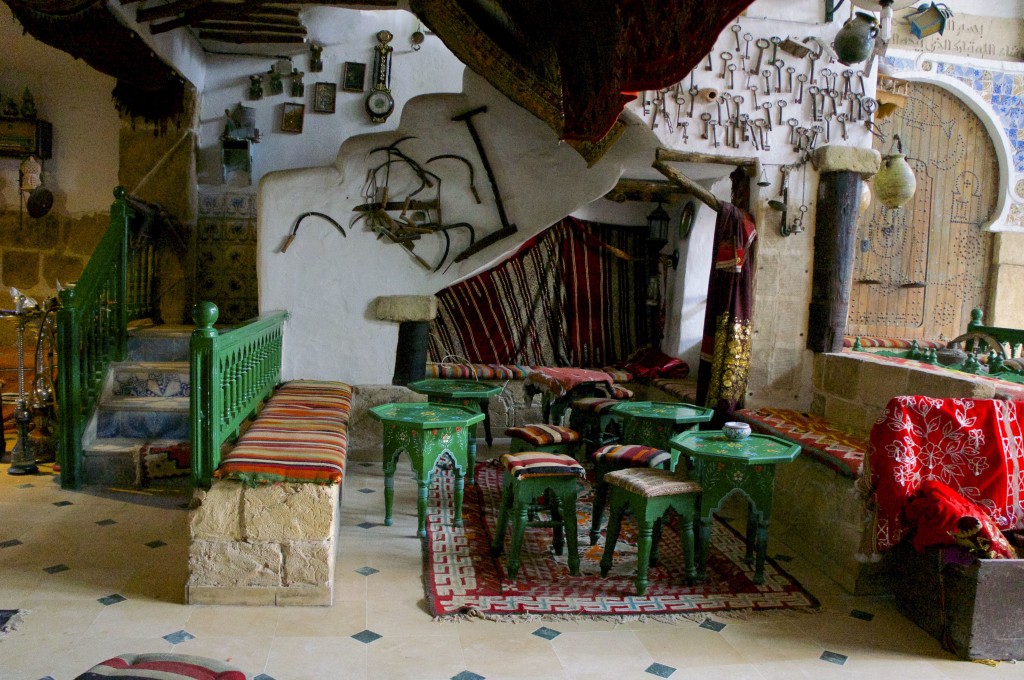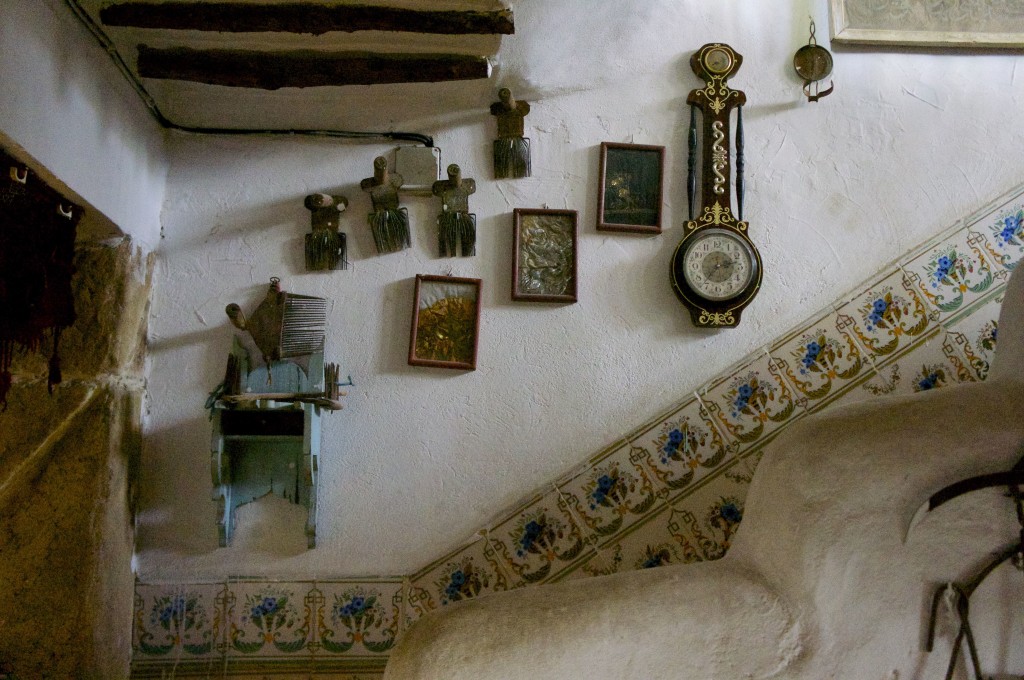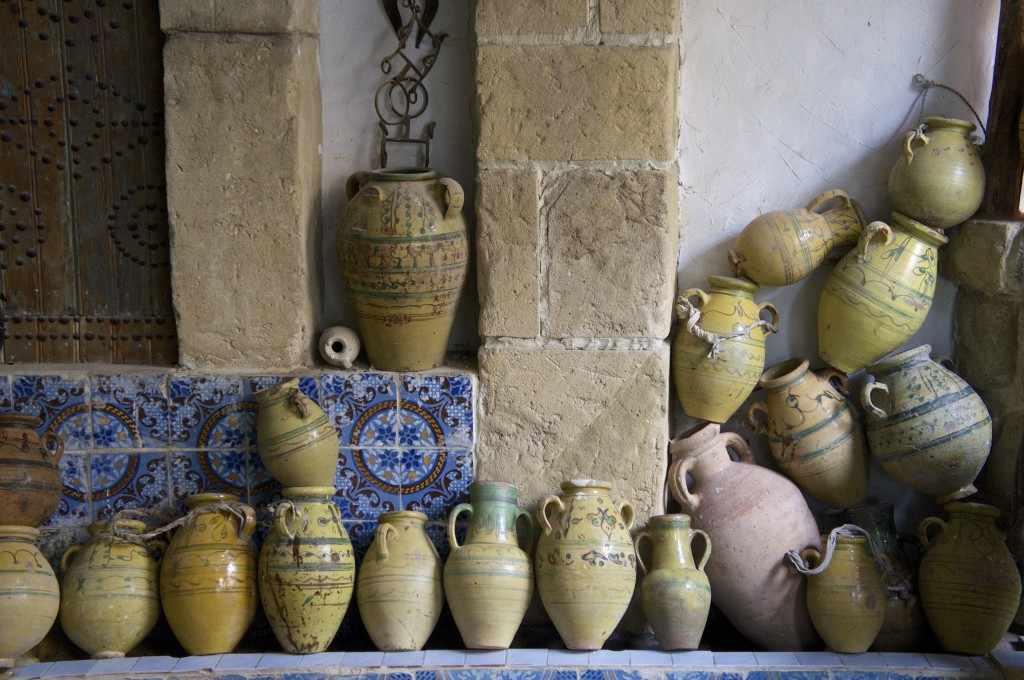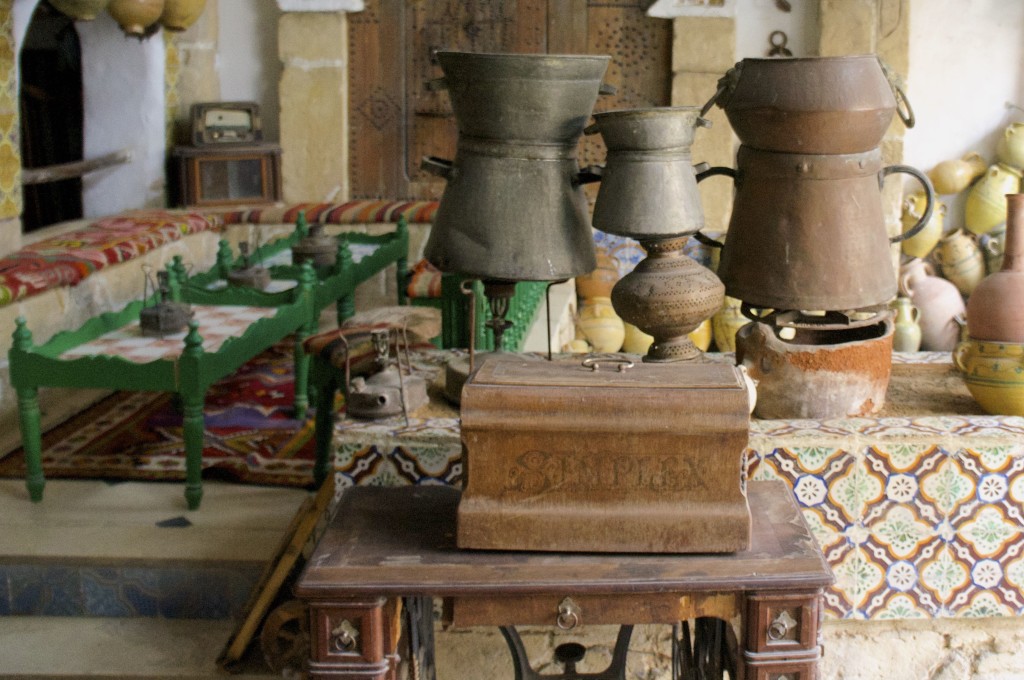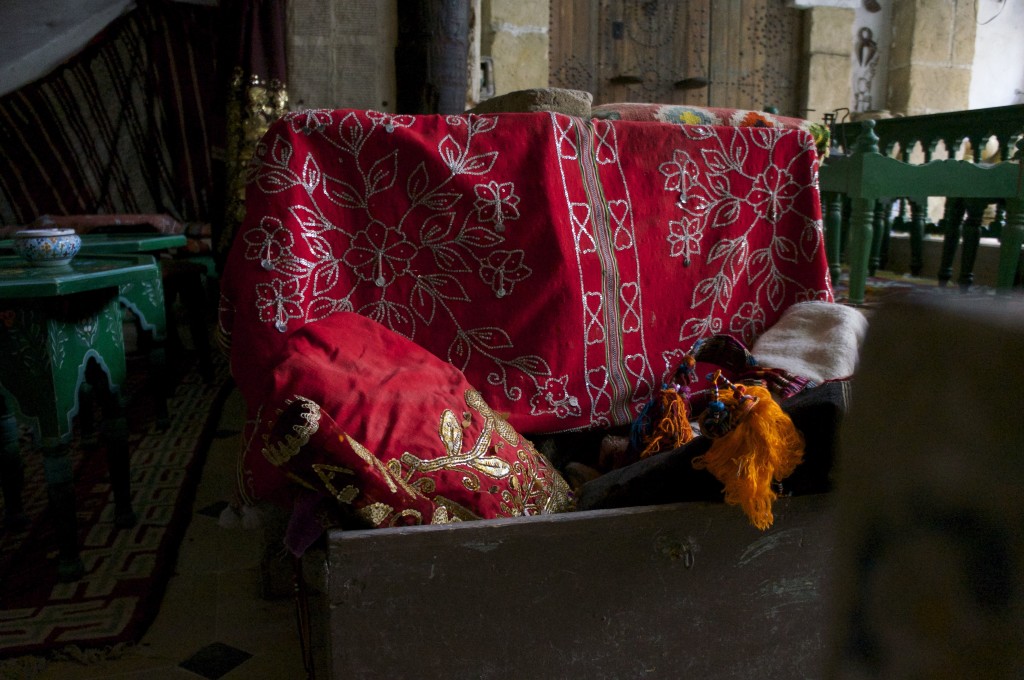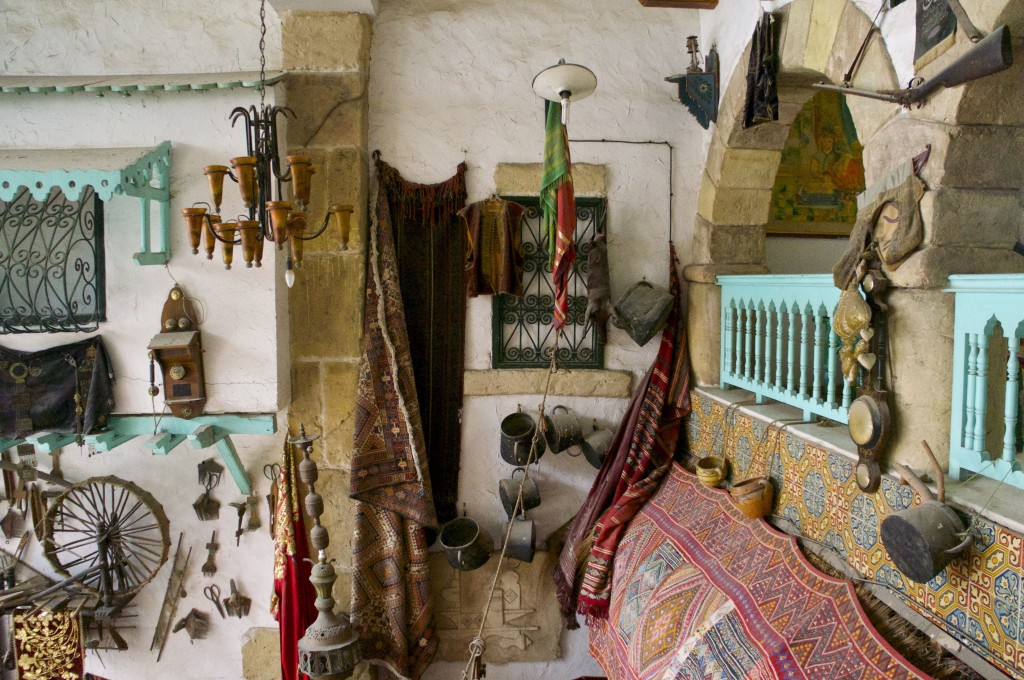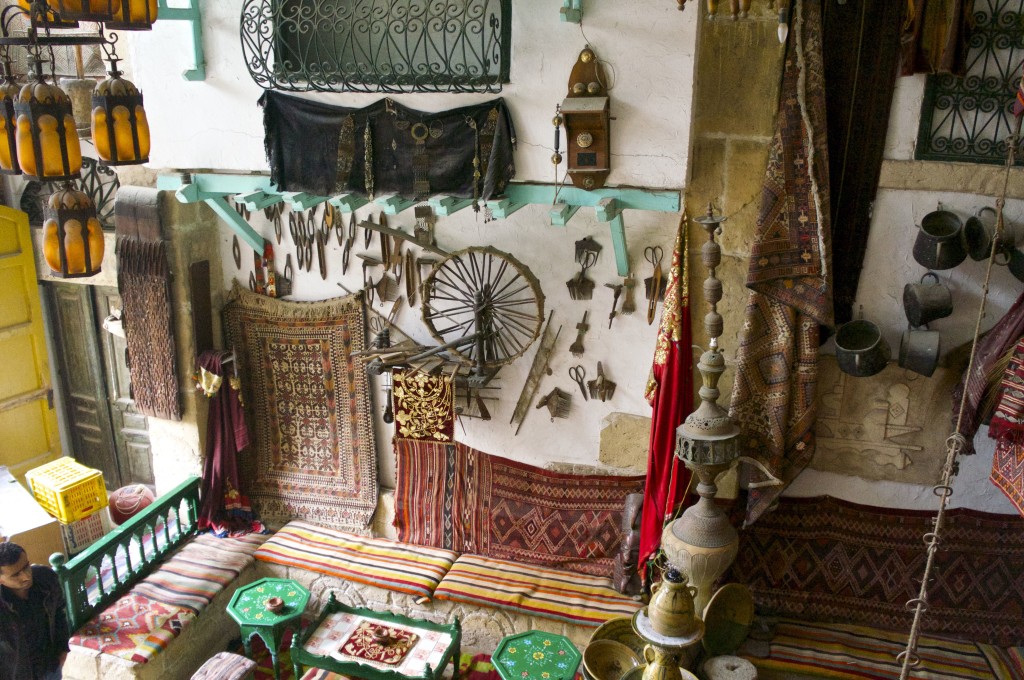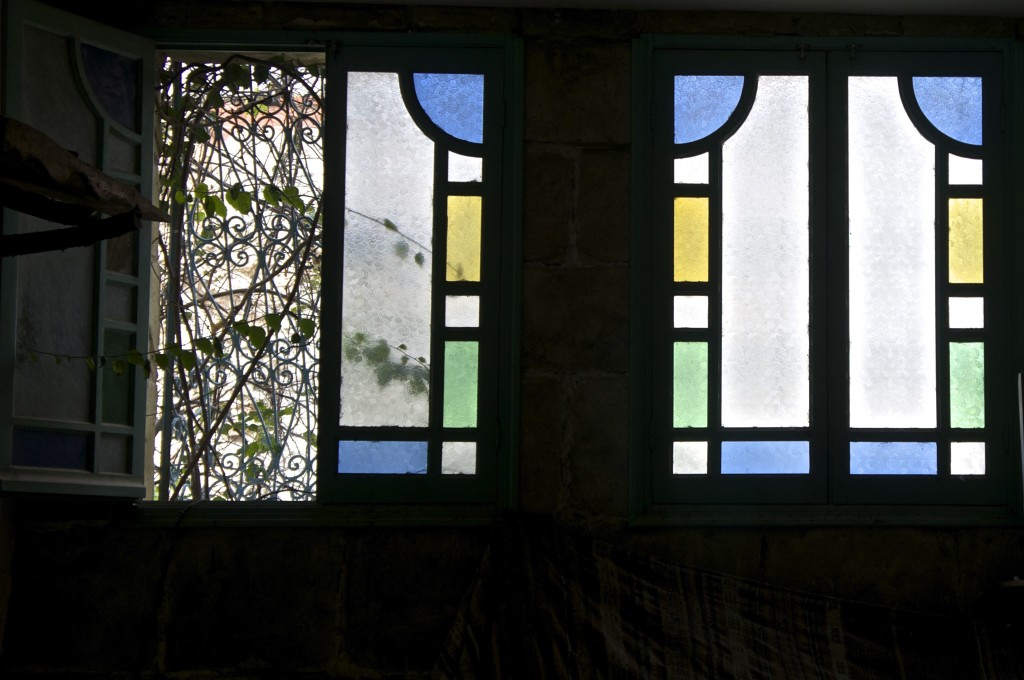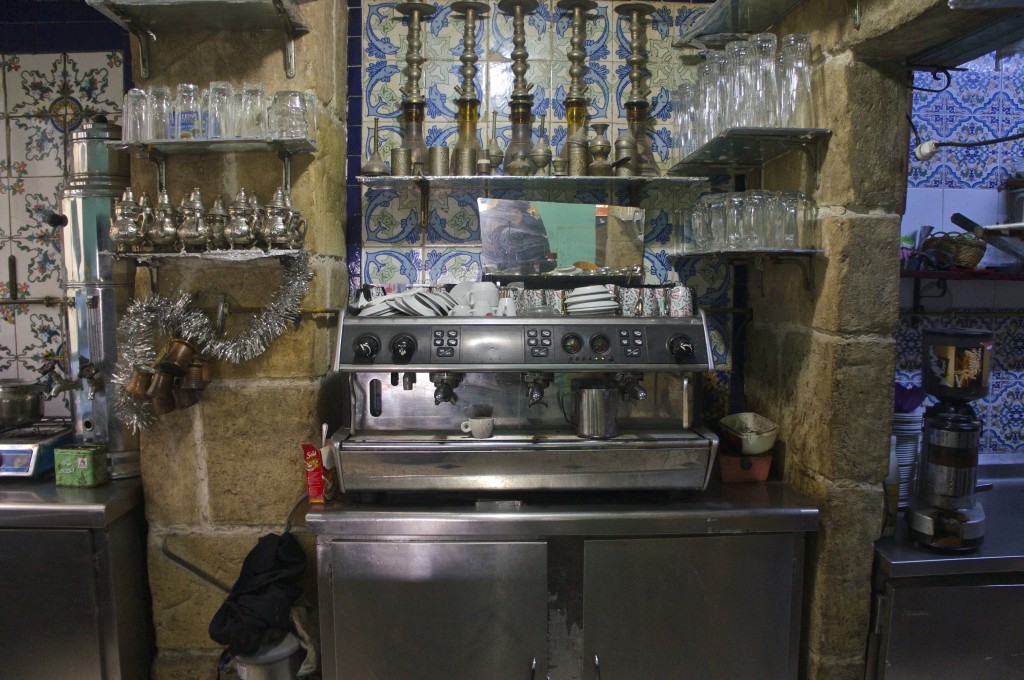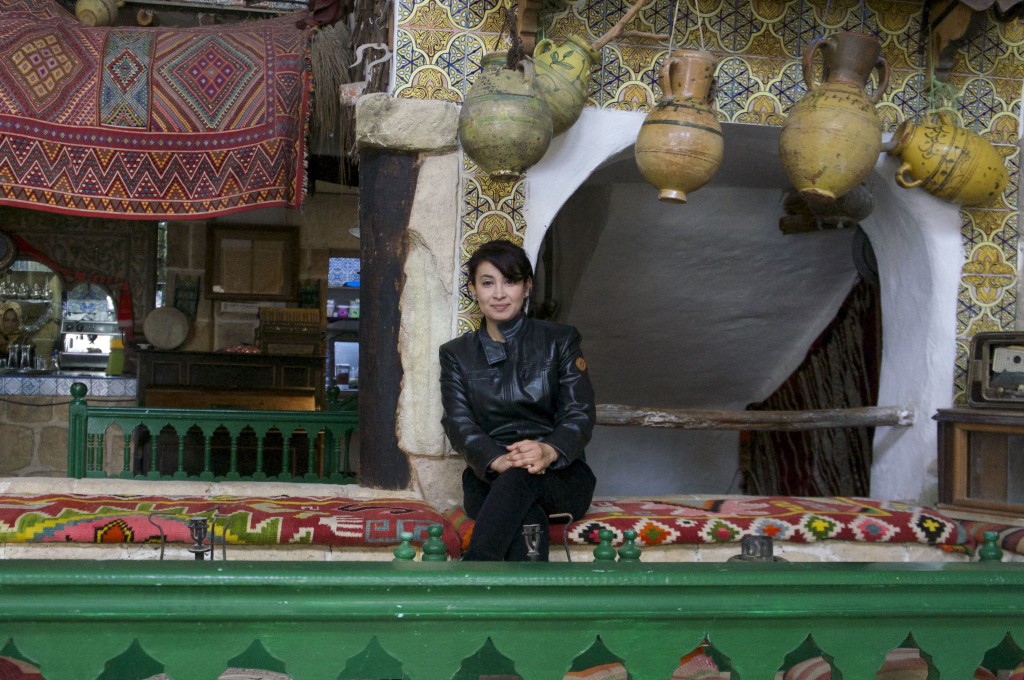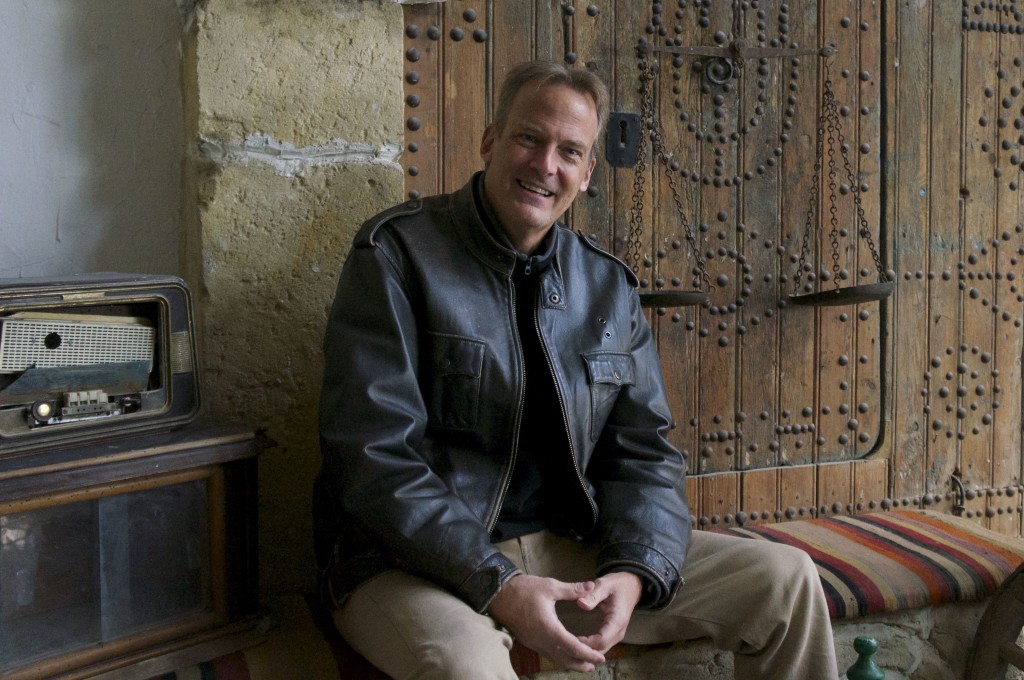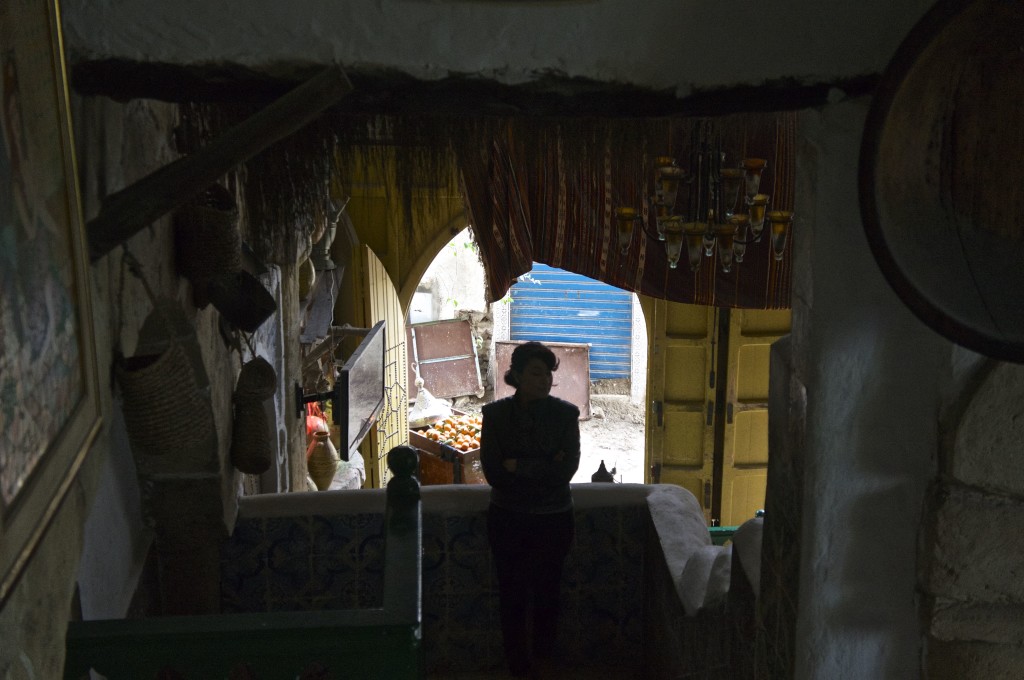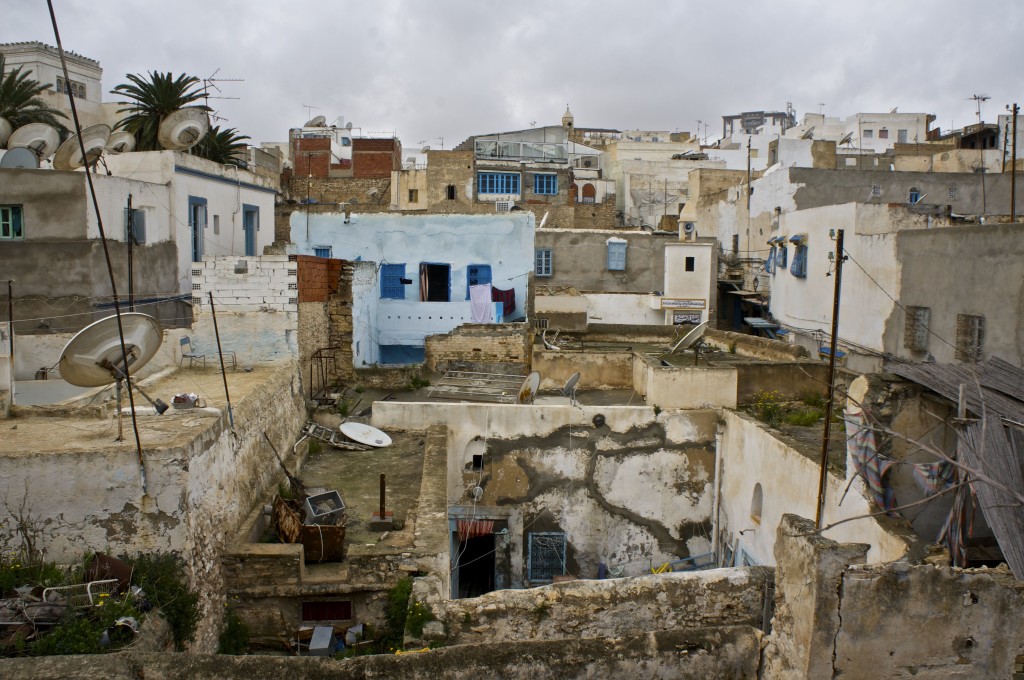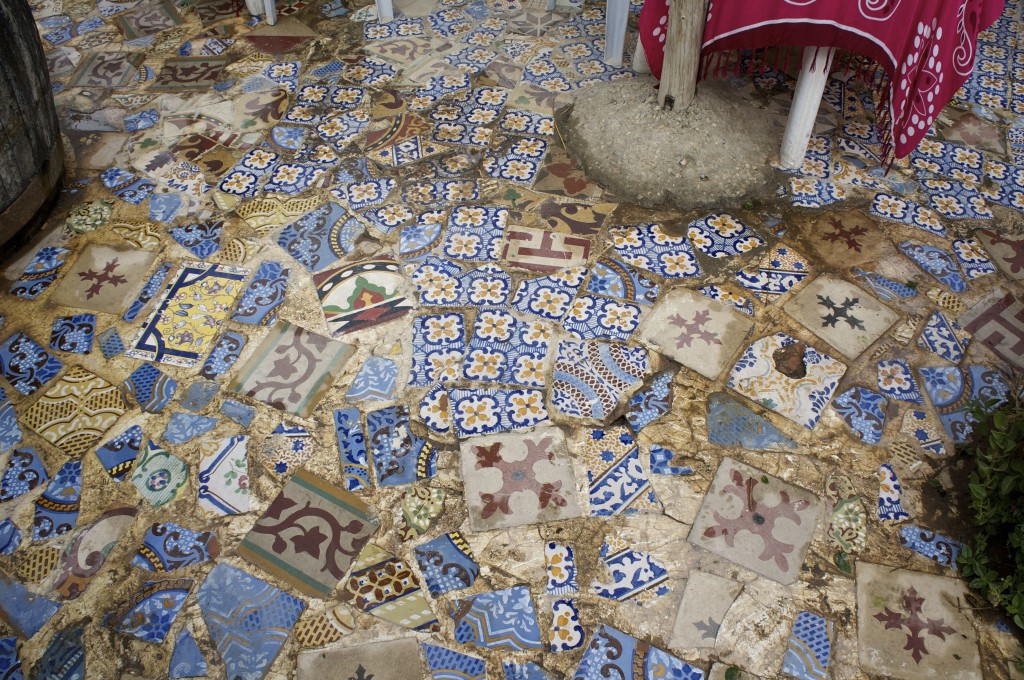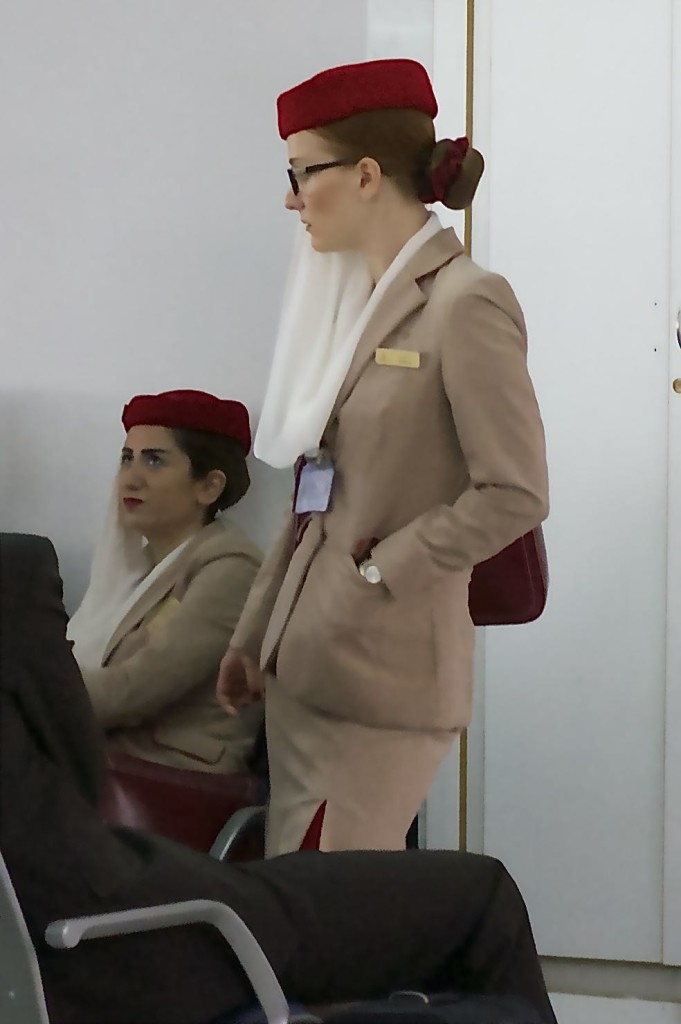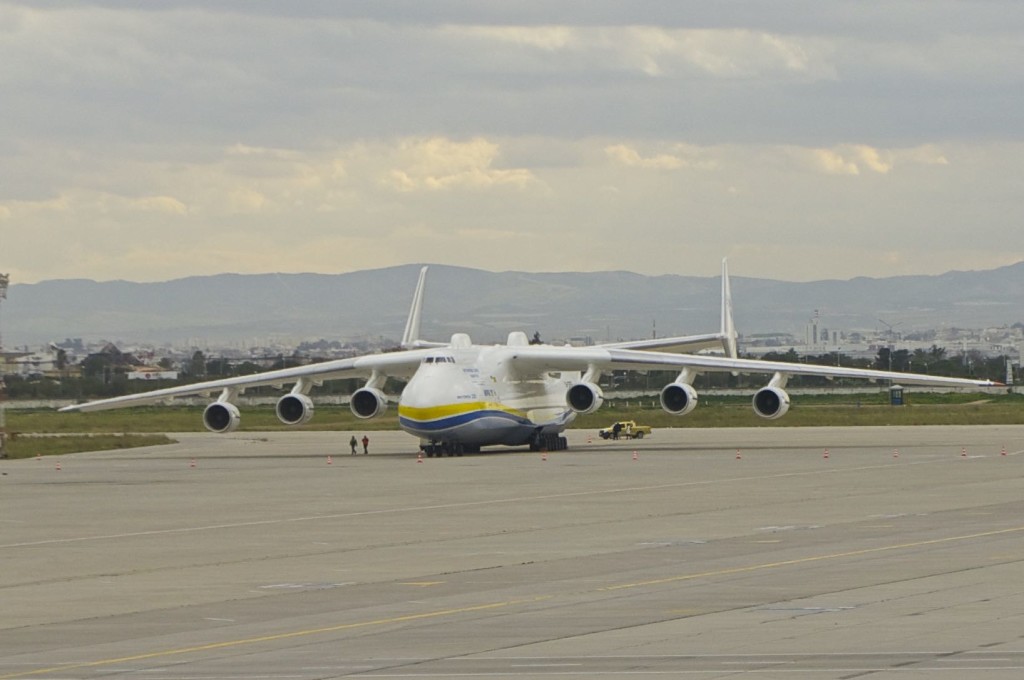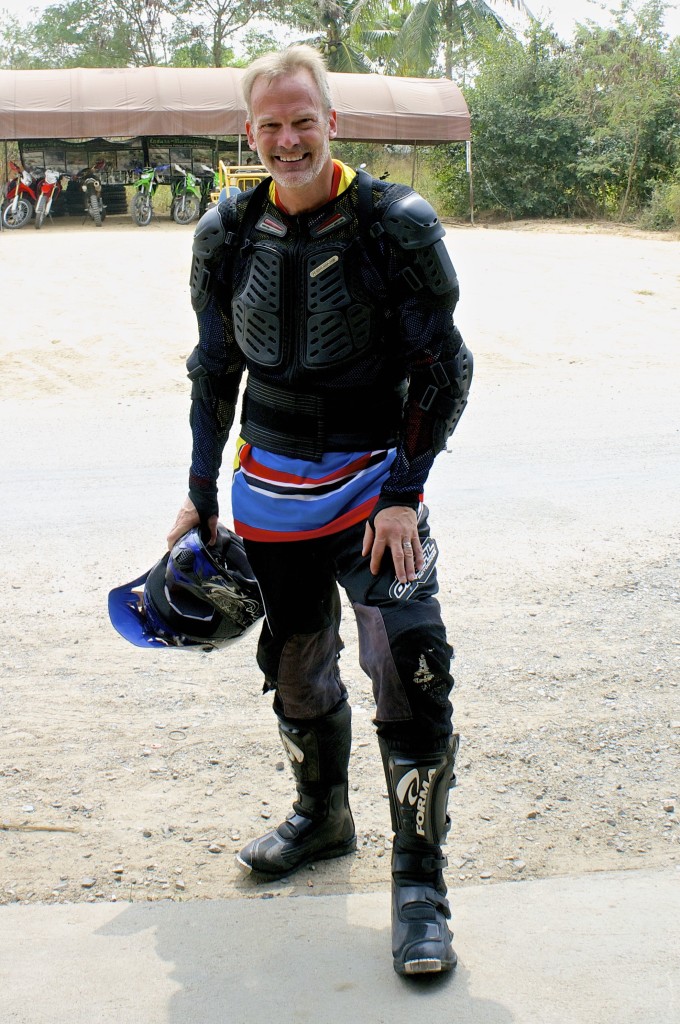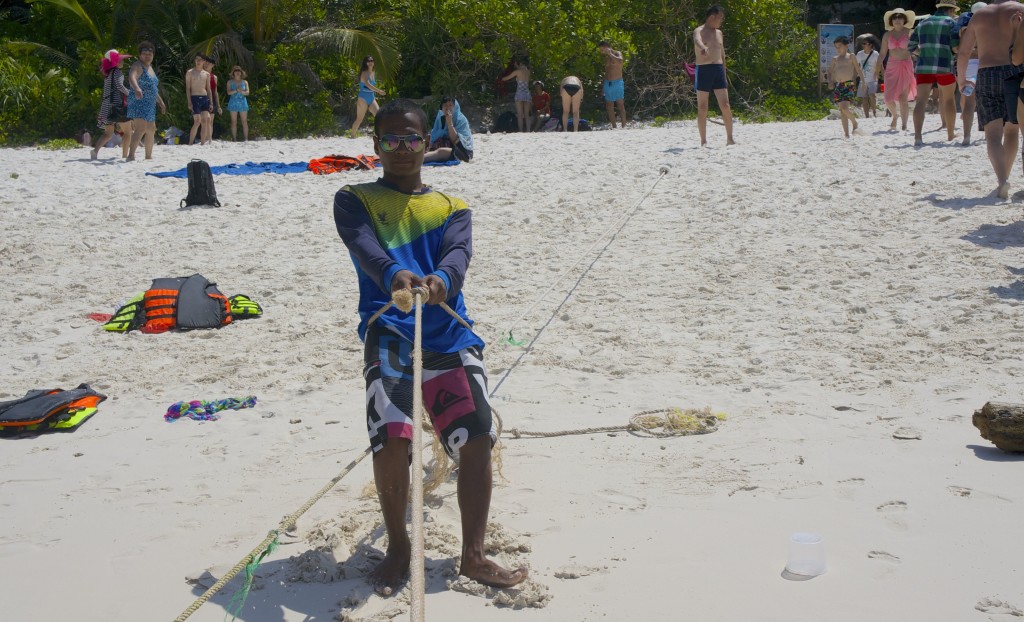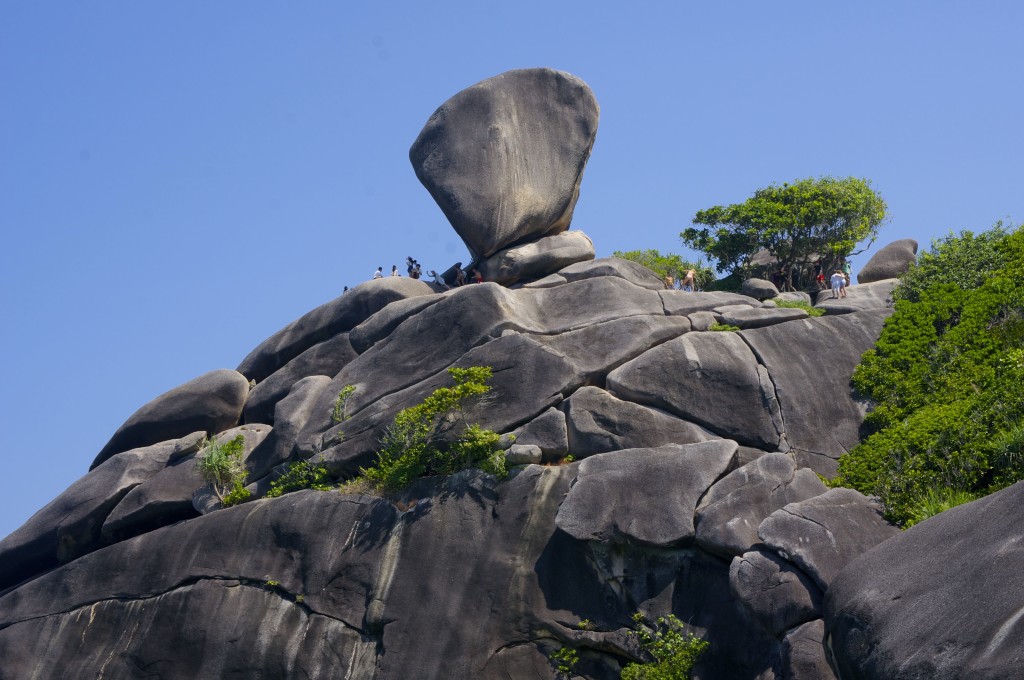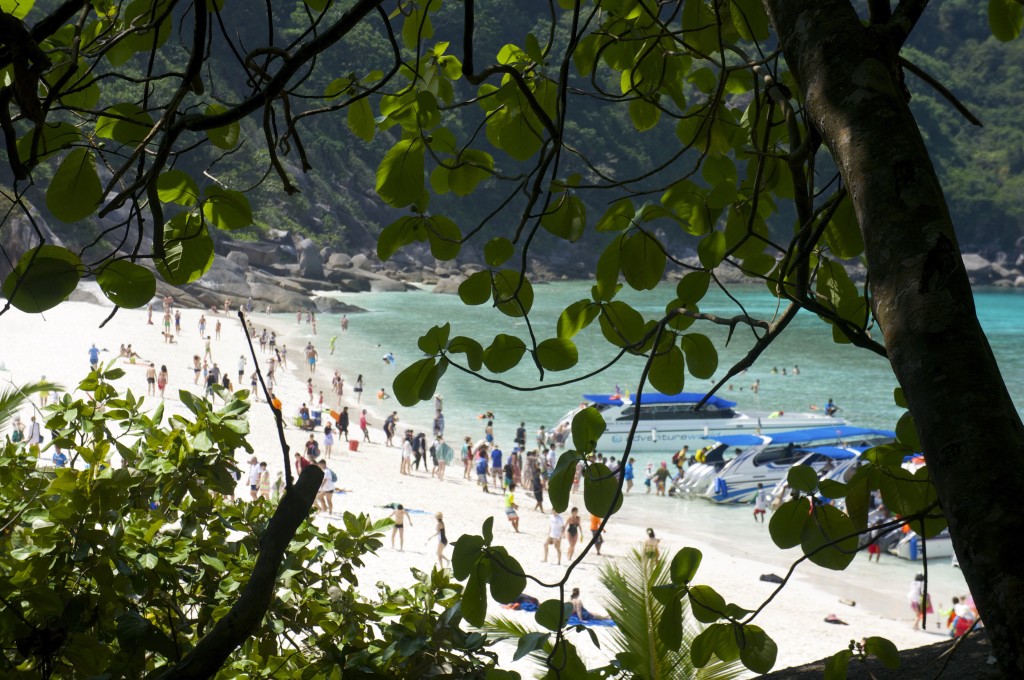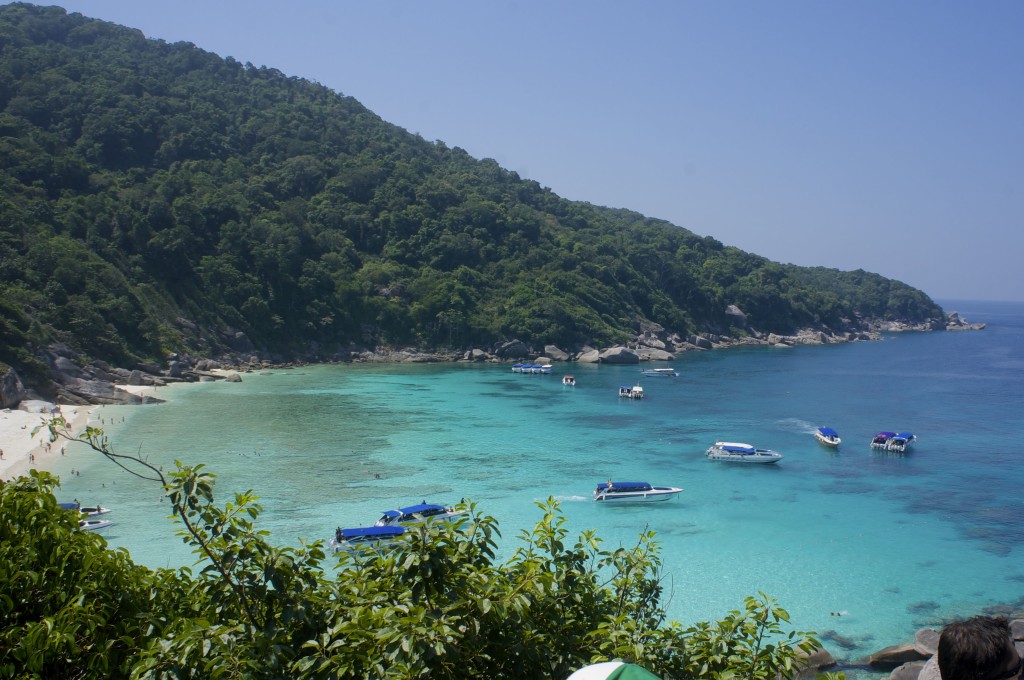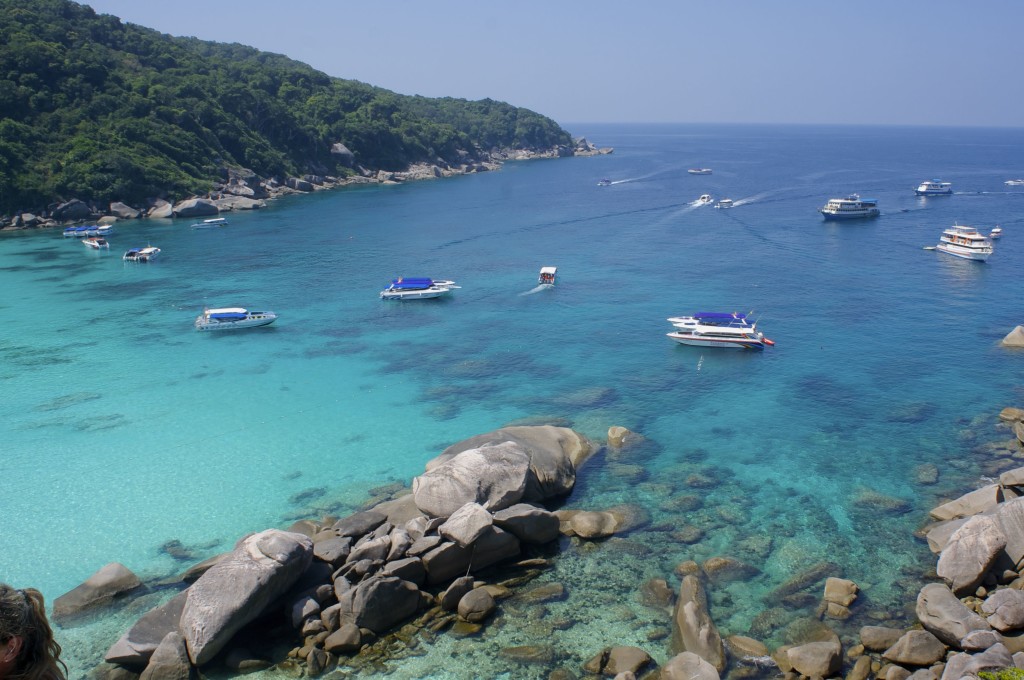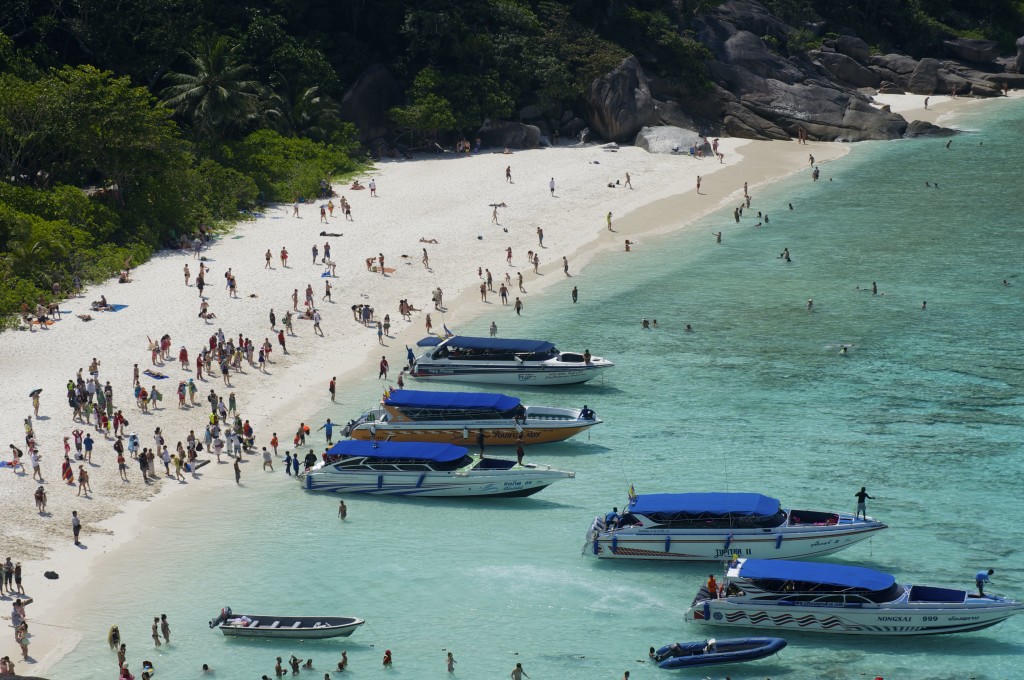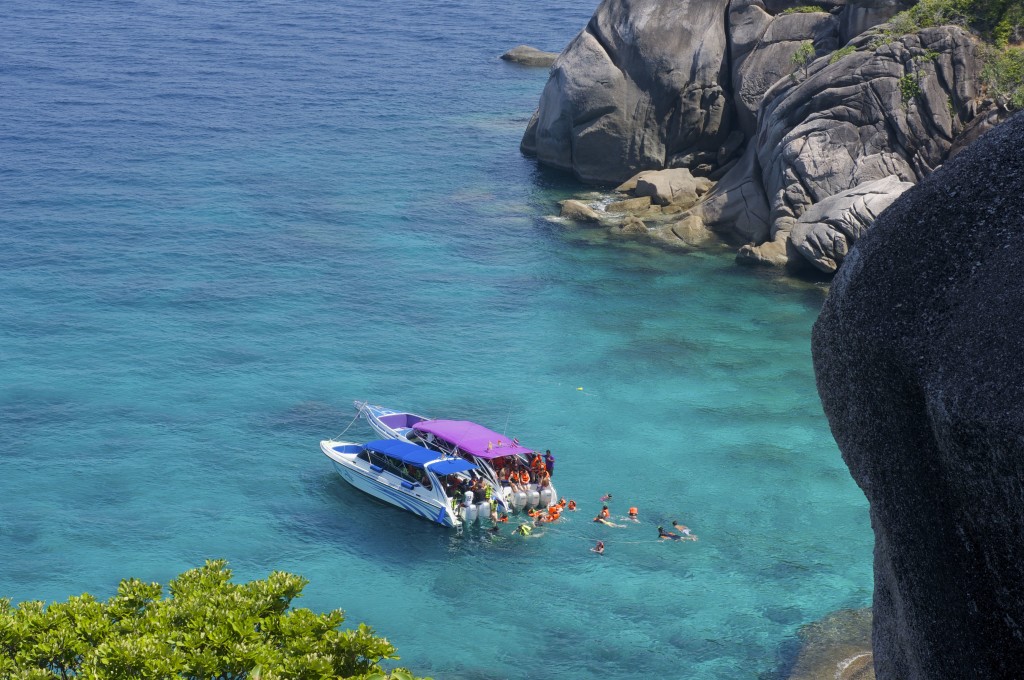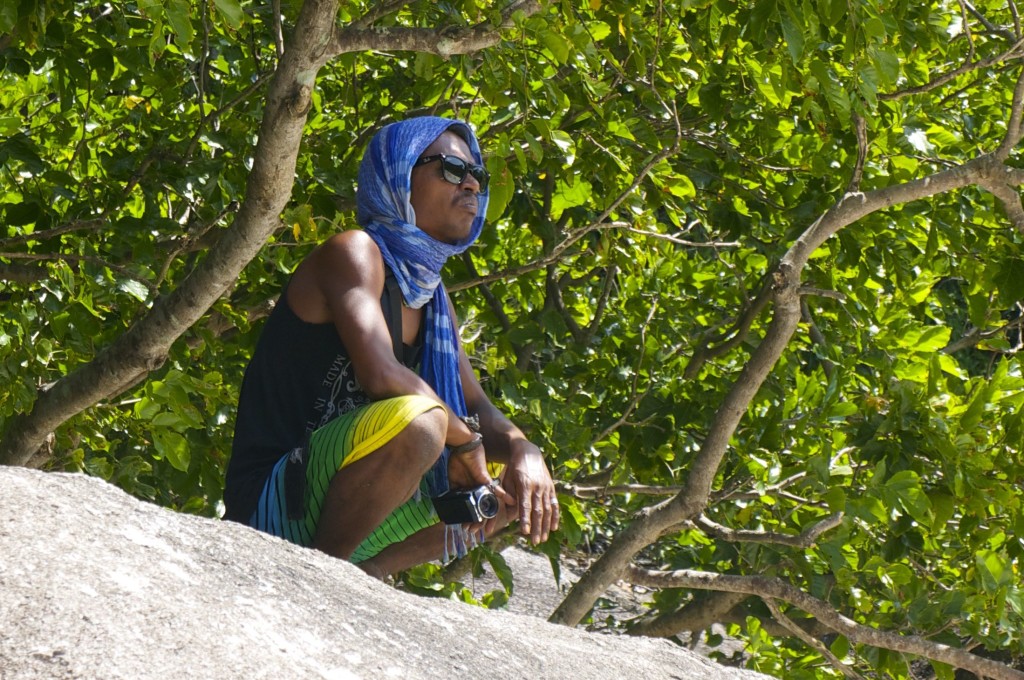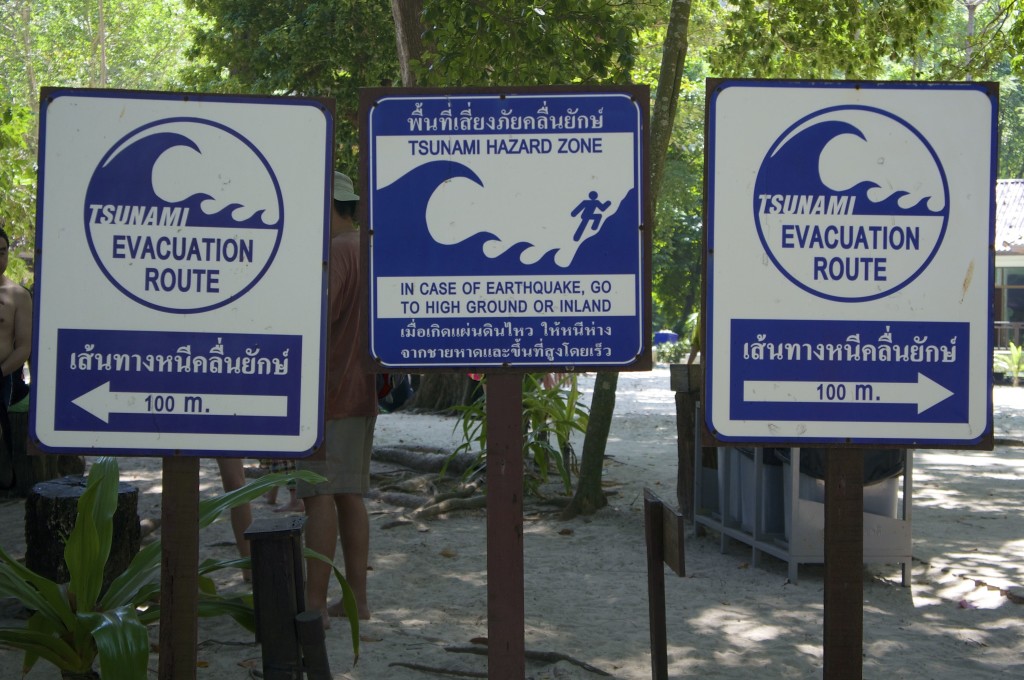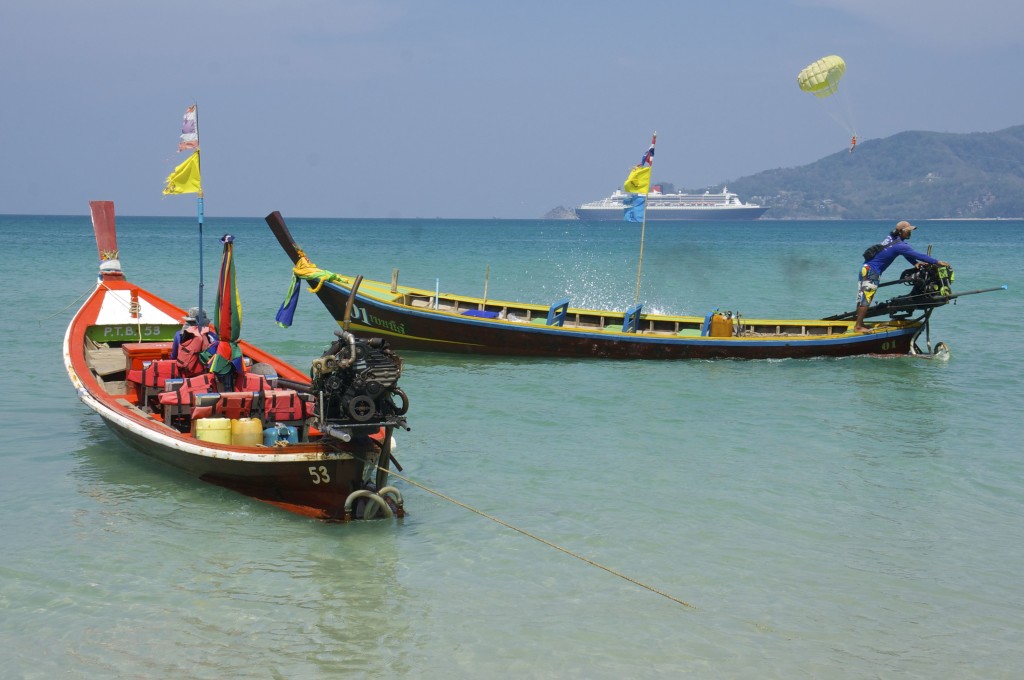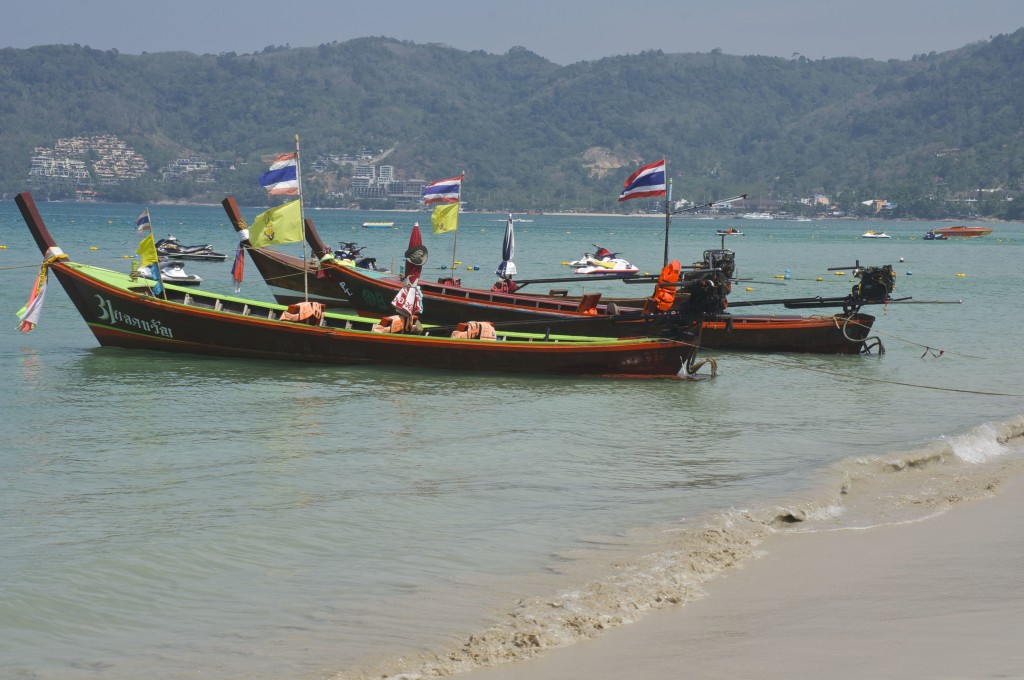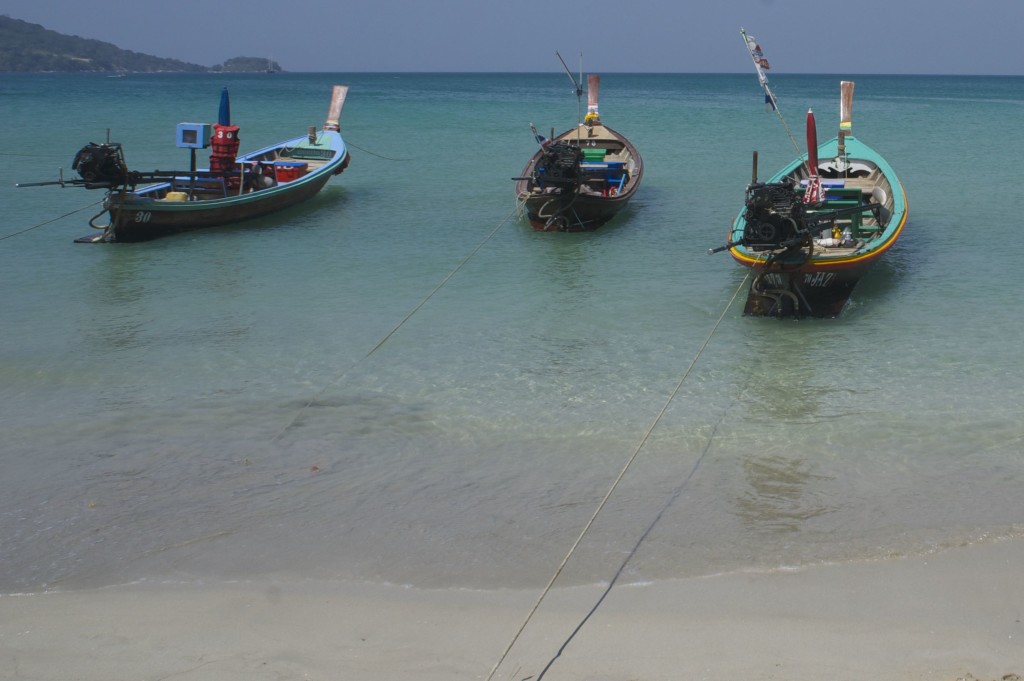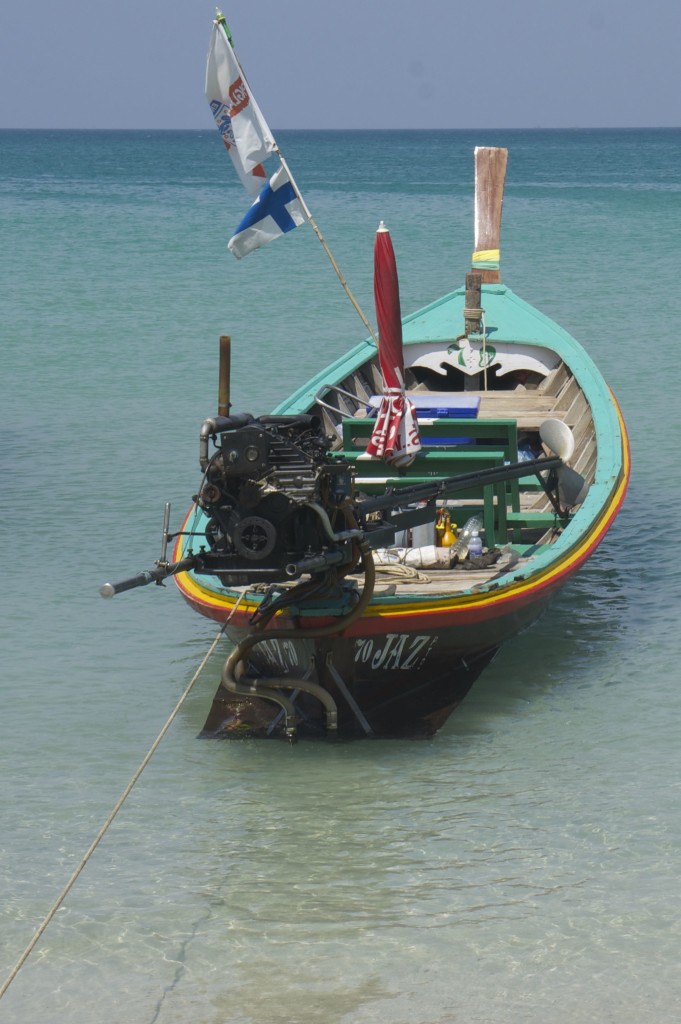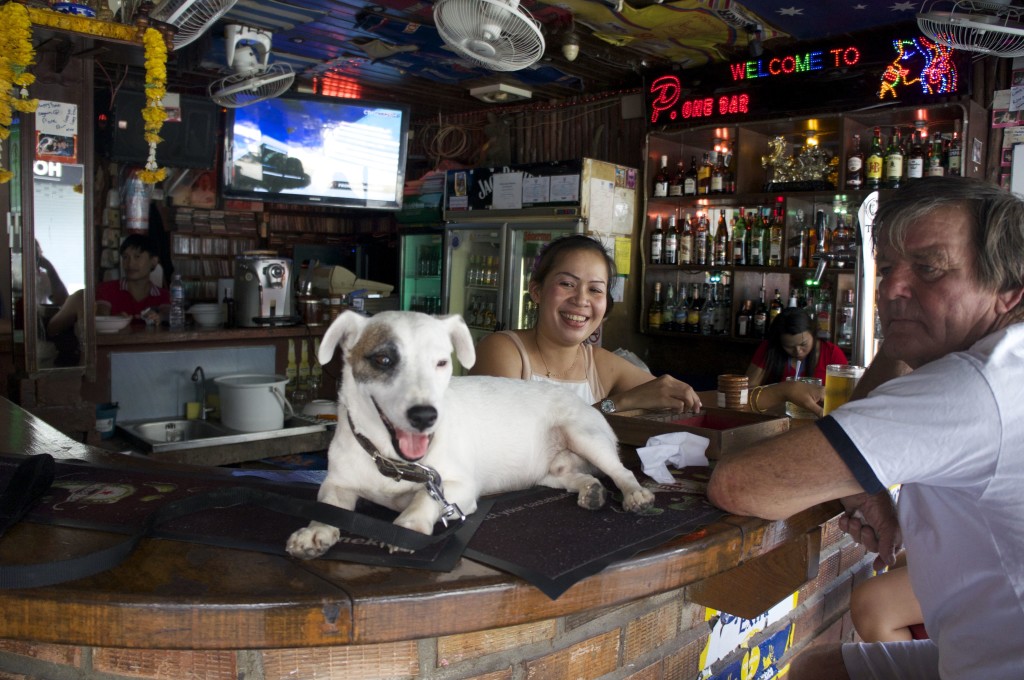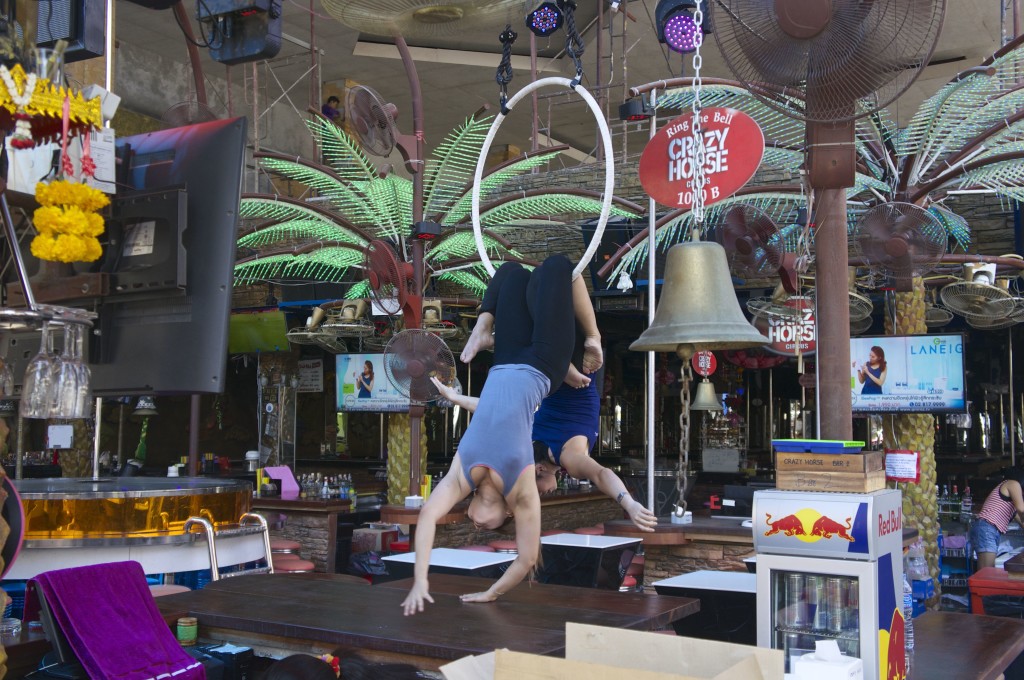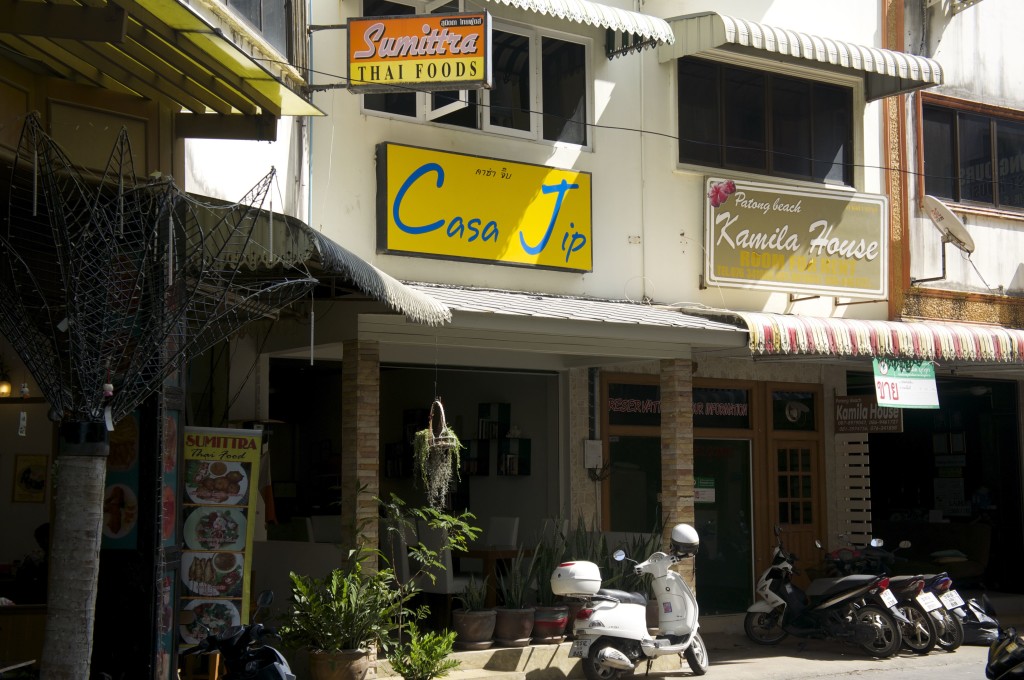I shot most of these in Sousse, Tunisia.
Archives for February 2015
Old Weird French Cars
Kairouan
Kairouan is either the third or the fourth holiest site in Islam, depending on whom you talk to. (Question: who compiles rankings like this? How many cities are so ranked?) The town is a UNESCO World Heritage Site. Like Matmata, it’s a Tunisian town with a George Lucas connection; the “Cairo” scenes in Raiders of the Lost Ark were filmed there. I did not shoot any knife-wielding locals (although some of the touts came close to deserving it).
I took a louage there yesterday, accompanied by three good friends. We were here:
Our first stop was the Great Mosque of Sidi-Uqba, which dates from the Ninth Century. Two of the friends with me were women who generally did not wear headscarves. At the door to the mosque, they were requested to cover their heads as a sign of respectful dress. One of my friends complied, taking one of the scarves that hung by the door and wrapping it very loosely over her head. The other refused as a matter of principle and didn’t join us at the mosque. I could see her point, though having just been required to wear a sarong to cover my knees before entering a Buddhist temple in Sri Lanka, I understand the need to balance core personal beliefs against the demands of a religious society.
Like many mosques I have seen, the Great Mosque presents a fairly spare exterior. The interior spaces I could see were richly carpeted and had large chandeliers. Verses from the Qur’an were inscribed on the walls.
After the mosque, I went rug shopping. What can I say? Academics love rugs. From the roof of the merchant’s shop where I bought two beautiful Berbers, I looked out into the medina and the surrounding town.
After rug shopping, we walked around the medina.
Our final stop was the Mausoleum of Sidi Sahab, generally known as the Mosque of the Barber. There was some gorgeous tile work there.
Bulla Regia: Amphitrite Underground
Bulla Regia is a Roman ruin near the town of Jendouba, a four hour trip from Sousse by louage. While not as large as El Jem or Dougga, Bulla Regia has two unusual features. Some of the houses there were built underground, similar to the troglodyte pit dwellings of Matmata, but with Roman columns in subterranean plazas. And though some of the best mosaics from Bulla Regia are now on display at the Bardo Museum in Tunis, many of the surviving houses still have their mosaic floors in situ.
First I entered the House of the Hunt. It doesn’t look like much from the outside, though in its day there was probably a structure above-ground too.
Then I descended the stairs.
What I saw at the base of the stairs amazed me. It was a plaza defined by columns and brilliantly lit by sunlight streaming in through unusual hexagonal windows.
There were various rooms adjoining the underground courtyard, most of which still had their original mosaic floors.
I went back up to ground level and peered into other ruins in the neighborhood.
Eventually, I came to the House of Amphitrite, a place that made my entire trip worthwhile.
Amphitrite was waiting for me there. There was no one else in the house — indeed, during my three hours in Bulla Regia I saw only two other tourists. So I had the goddess all to myself. She was beautiful. And unusual. The halo seems like it might be a nod to the emerging Second Century Christian aesthetic
Below her was Cupid riding a dolphin while admiring himself in a mirror. Having just been to Thailand, I recognized the impulse here: this is every Thai girl I saw riding a motorscooter while taking selfies.
Poseidon and some other dude were there too, but I think Amphitrite had eyes only for me.
There was also a picture of the owner of the house. Lucky guy.
There were various rooms adjoining Amphetrite’s chamber, most with relatively intact mosaic floors.
I know very little about the classical world, but couldn’t help but wonder what will remain of our civilization in two thousand years. Somehow I doubt it will be as beautiful and enduring as what I saw in Bulla Regia.
Bulla Regia: I Dreamed I Saw Saint Augustine
Fish out the Dylan, put John Wesley Harding on the platter, and drop the needle on track three:
I dreamed I saw St. Augustine,
Alive as you or me,
Tearing through these quarters
In the utmost misery
With a blanket underneath his arm
And a coat of solid gold,
Searching for the very souls
Whom already have been sold.
Augustine was here, in Bulla Regia, in 339. He took the stage on a stormy day and chastised the citizenry for selling their souls. He imagined the people greeting a visitor to the town: “What have you come for? Theatrical folk? Women of easy virtue? You can find them all in Bulla.”
(Theatrical folk? Women of easy virtue? Yes, please. Those are my people.)
Augustine may have looked down from the stage at this mosaic of a bear and wondered what he’d gotten himself into.
And when his preaching was done, he might have wandered around town, met some of those moral reprobates, and been tempted to return to the wanton behavior of his younger days.
Augustine and I were here:
“Arise, arise,” he cried so loud,
In a voice without restraint.
“Come out, ye gifted kings and queens
And hear my sad complaint.
No martyr is among ye now
Whom you can call your own.
So go on your way accordingly,
But know you’re not alone.”
And nearby, a different kind of shepherd looked after an errant member of his flock.
I dreamed I saw St. Augustine
Alive with fiery breath,
And I dreamed I was amongst the ones
That put him out to death.
Oh, I awoke in anger,
So alone and terrified.
I put my fingers against the glass
And bowed my head and cried.
Café El Kasbah
The Sousse Medina doesn’t give up its secrets easily. I’ve spent dozens of hours there. After each visit, I walk away telling myself that now, at last, I know the place, know its byways and cool spots. Then on a subsequent visit I discover something new and amazing and wonder how in the world I missed it before. It’s like one of those dreams where you discover a hidden room in your house that you were only dimly aware of before.
My new friend Sheima and I had planned to go to Tiziri (a/k/a the Berber café), a place I have written about before. But when we got there this morning, we were told it was closed. A kid hanging out near the entrance to Tizieri said there was another café just around the next alley. This was news to me, but we stepped our way down a muddy path til we came to the Café El Kasbah.
Set into the ancient walls of the Medina, the café was chock-full of antiques. At times, the displays crossed the line into kitsch, but Arab kitsch still looks pretty good to this American.
We traded the camera back and forth taking photos of each other.
From a patio up on the roof, we could had a nice view of the medina. And at our feet, the floor was made of wildly mismatched tile shards.
Even as my time in Sousse draws, unfortunately, to a close, I am delighted to find that the town can still surprise me. I hope I can discover still more before I leave.
Sri Lanka: Notes and Miscellany
I’m back in Tunisia now, tanned and relaxed after my vacation in South Asia. I’ve got notes to myself that I made during my travels that don’t fit into the posts I made about my travels. Here are some notes from Sri Lanka.
• I flew Emirates for the first time. The company pays a lot of attention to branding. The first classes stewardesses were arrayed in tan suits with crimson kepis and white scarves which covered one side of their head. Looks like a cross between Ottoman and Arab dress. The second class stewardesses wear tan knee-length skirts and white blouses.
The stewards wear brown pinstriped suits. All the clothing has crimson piping and lining. The look is intended to convey richness and something faintly exotic. On the plane, the seatback videos display (upon request) the direction of Mecca relative to the plane via a graphic of the plane with an arrow pointing to a picture of the famous black stone.
• Saw this ungainly bird, an Antonov 225, at the Tunis airport. It’s supposedly the longest and heaviest commercial plane in the world. It looks like it was designed by a Soviet committee: six engines, twin tail, very low landing gear.
• In Colombo, I stayed at the Colombo Beach Hostel. Spartan dorm-style accommodations. The travelers who spent nights in the room with me included three young American women traveling together. I came back to the room one night to see a tapestry draped over the edge of an upper bunk bed and a soft cheery light glowing from the bottom bunk. When I entered the room, a hand pulled the tapestry back and I saw all three women on the bunk below watching a movie together. They had strung Christmas lights around the lower bunk, giving it a cozy cave-like feel, like the kind of bedroom forts my friends and I created when we were eight. I give full props to anyone with the foresight to travel with tapestries and Christmas lights.
• One day I walked into our room and saw the three women’s books laying about. I’m a book snoop. One was reading Zen and the Art of Motorcycle Maintenance, another A Moveable Feast, and the third Dr. Jekyll and Mr. Hyde. The first two are travel classics that people in the hostels I stayed at in Europe thirty years ago were reading. I felt a certain kinship. The Dr. Jekyll reader obviously marched to the beat of a very different drummer.
Also met an Asian American woman who’d worked for an ad agency in New York but had gotten sick of it and was now traveling around South Asia. She had broken her foot in India while sitting between carriages on a train in India. She made the mistake of dangling her feet out to catch the breeze when the train passed by a concrete mile marker. The blow smashed her ankle. She was hobbling on crutches. I felt bad for her, though she didn’t seem particularly unhappy. I brought her food from the restaurants I visited.
Another hostel mate was Tim from Yorkshire, age 30, a sound technician who once worked aboard a ship in the Adriatic Sea that went from port to port giving performances of anarchist theater. The vessel was decked out like a pirate ship and the cast and crew aboard lived communally. He’d also done sound with another theater company that toured Qatar. He, too, was reading Zen and the Art.
Diego and Nadine, 19 and 20, were from northern Italy, near the Austrian border. They had been traveling together for five months with an open-return ticked on Ethiad. A sweet couple.
Kevin was from China, one of a growing number of independent young Chinese tourists I saw. Chinese people have generally travelled in tour groups, but I have seen more and more Chinese people in their twenties traveling solo, which I think is wonderful. He was lugging an enormous Nikon D800 and a substantial tripod. I dusted off what little Chinese I have while speaking with him.
• In Anuradhapura, I hired a guide to take me to the ancient Buddhist ruins. Avila drove a white Toyota HiLuxe and had been a guide for twenty years, starting off by driving tourists around in his father’s old Morris Minor.
• Trains in Sri Lanka have a Victorian British feel. Signs around the stations are written with polite British circumlocutions. When a train is about to leave, the stationmaster comes out of his office with a large triangle bell and strikes it three times. There are separate bathrooms for tourists, something that didn’t sit well with me. A portion of each carriage is reserved for monks and clergy.
• Over breakfast at a tiny cafe in Colombo, I met Frank from Buxton. He had long white hair and a beard, a Santa-ish look. He had retired at age 52 and has spent 17 years backpacking around the world. He maintains a flat in Buxton and has a long-term girlfriend; they live separately but travel together. I was somewhat in awe of how a guy living out of a backpack could have such an immaculate pressed white shirt, especially when he told such wonderful stories about riding through Lao in the back of a flatbed truck and hiking through the jungles of Malaysia.
Enduro Madness
“Take your pants off,” said the pretty Thai woman standing in front of me. “Shirt and socks too.”
I don’t have much body modesty, but even so I hesitated for a few seconds before complying. When in Pattaya, do as the Pattayans do, right? So off came the Levis, the T-shirt, the socks, all the way down to my skivvies.
The woman dropped to a squat right in front of me, eye level with my JCPenney briefs. I was only a little miffed that she didn’t have the courtesy to check out my junk. Instead, with the practiced efficiency of a nurse, she strapped knee-and-shin protectors onto my legs. Riding pants were next, followed by a jersey, a back brace, and a complicated mesh jacket with armor at the spine, shoulders, elbows and forearms. She indicated to me to pull on thick wool socks and then fitted my feet into heavy boots with steel soles and toes and more armor around the ankles. She handed me gloves, googles, and a helmet and indicated that I was all set.
Wait, I thought. There’s a vital piece of anatomy unprotected here.
“Um,” I stammered, “a cup?”
The woman looked puzzled.
“You know. A cup,” I repeated stupidly, as if doing so might somehow bring forth a miracle of comprehension.
She stared at me blankly.
Obviously, English wasn’t going to get the message across, so I resorted to charades, reaching down and curving my hand protectively around my privates.
“Cup?” I repeated, hopefully.
The woman shook her head. “No need,” she said.
No need. OK. Did this mean that there is no possible chance of getting genitally maimed doing enduro? Or did it mean that, in her estimation, there was nothing there worth protecting?
As it turned out, like so many millions of guys before me, I was unduly worried about the wrong head.
The woman repeated the dressing ritual with my fellow rider, a young Israeli named Yoab, who had recently completed his IDF service and was now vagabonding his way around Thailand. We were then led to our machines by our “instructor,” a thickset tattooed Thai guy who spoke no English.
I climbed onto a Kawasaki 250 with knobby tires and fired up the engine. It felt good to be astride a bike again after six months of pedestrian life. I had signed up for three hours of enduro riding with an outfitter appropriately named Enduro Madness. I was here:
With our “instructor” in the lead, we pulled out and rode down the streets of the outskirts of Pattaya. Our “instructor” demonstrated his prowess at popping a wheelie and maintaining it for a quarter mile down the road. Impressive, yes, but neither instructive nor reassuring.
Then, without so much as a warning, we veered off the road and onto a dirt path through some scrub flats near the seashore. This was my first-ever experience at riding off-road. We curved through the trail, which changed from hard dirt to light sand to deep sand. I was riding second, behind the “instructor.” I held onto the vain hope that we were going out to a meeting spot where our real training and practice would begin.
And after about 45 minutes of riding, we did pull into a clearing and stopped under a tree. I had been pretty tense, doing this kind of riding with absolutely no instruction, but now I relaxed. I had made it clear, in words and writing, that I had no experience whatsoever with off-road riding. Yoab was just as inexperienced as I. Now, I thought, we would finally be taught some of the dos and don’ts.
But this did not occur. After about five minutes, the “instructor” went to mount up again.
“Wait,” I called out. “It would be nice if we could get some instruction here. I mean, this is my first time doing this.”
Yoab seconded my motion, which I then reinforced with gestures that I hoped showed my puzzlement at how to ride.
The “instructor” came over to me and indicated that I should sit forward more, keep my knees hugging the gas tank, and keep my elbows out slightly. That was it. Nothing about gearing, breaking, turning, balancing, or anything else. Oh, but as we took off again, the “instructor” did pop another wheelie, just to make sure we knew how cool he was.
For the first two hours, I was very tense, but did OK. We tackled some gulches and hillocks. I knew enough to understand that speed was my friend on these obstacles, and the torquey little Kawa responded well. Jumping over those obstacles felt a lot like horseback jumping, something I haven’t done in decades but apparently still have muscle memory of. It seemed impossible that I would get through some of the gulches, but I goosed the throttle and flew. What a kick.
Far less of a kick, though, was turning. I’d never done much turning on dirt or loose gravel before and had always gone out of my way to avoid it. Each time I felt the Kawa break traction, my body would involuntarily tense up all over, prompting me to tell myself out loud to relax. Deep sand was the worst. Knowing nothing about how much to rev the engine, what gear to be in, or anything else for that matter, I stalled out a few times and had to rock the bike back and forward to get moving again.
We rode along a beach, where the knobby tires did a good job on the wet sand, and then curved around to slightly higher ground where there was a settlement of sorts. There I saw a black village and the cruelest poverty imaginable. There were large rectangular pits dug into the sand, where the people who lived in the settlement were burning wood, presumably to make charcoal. Everything about the settlement was flat black from the smoke, from the houses made of sticks and plastic bags to the people themselves and their children and dogs. The air was thick with woodsmoke, making visibility almost impossible. I felt dirty, more figuratively than literally, joyfully zooming through such a place on a recreational lark.
I was soon to receive my karmic payback.
We climbed away from the shore into the woods. Sometimes the trail was so narrow I feared that the Kawa’s handlebars wouldn’t fit through the gap. I was relieved when the trail widened again.
And then it happened.
I still don’t know why, of all places, I wiped out at that particular spot. There was nothing especially technically difficult about the terrain; it was dirt jungle floor. It was on an incline, a very modest one. There was a slight curve to the trail, which I may have misread. Or maybe after two hours of anxious riding I was fatigued. Or maybe this was just my payback from the black village.
To one side of the trail was a steep slope that led to a ravine maybe fifteen feet below. My front tire somehow slipped over the edge and the Kawa dropped sharply beneath me and came to an abrupt stop as it was grabbed by the jungle undergrowth of vines, saplings and tall grass. I flipped and flew over the handlebars with my feet in the air and dropped down, landing face-first with the full weight of my body behind me. My neck snapped back hard. Well, I thought, THAT’S not good.
Everything stopped.
Yoab stopped his bike on the trail where I’d flown over the edge and was making his way down to me. “Don’t move!” he yelled. I knew that was good advice, but I still experimentally wiggled my fingers and toes. Everything wiggled properly. My neck hurt, but I didn’t sense any grave injuries there. Had I not been wearing a full-face helmet, I would have been a lot worse off. After about two minutes of assessing myself and noting with satisfaction that various parts of me were starting to hurt, I sat up. Nothing drastic happened.
The “instructor” by this time had reversed course and found us. He said nothing to me, but set to work at excavating the bike. With Yoab’s help, they pulled it out of the embankment. The “instructor” set to work unbending the various parts of the bike that were bent. I felt shaky and achy, but was probably on an adrenaline high. I indicated that I wanted to ride on.
I fell two more times in the next ten minutes. I could blame that on the deep sand, but I think more to the point was the fact that I had lost my confidence. No more flying over gulches for me today.
We turned around, slowed the pace, and headed back to the riding facility.
From Ohio to Vietnam, I’ve had some excellent motorcycle instruction in the past. I have gone on tours with outfitters who stressed safety and technique. I guess I’ve been lulled into the assumption that all motorcycle tour companies adhere to those principles. I’m not sure I learned much about enduro in Thailand, other than it is in equal measures terrifying and fun. But I did learn the importance of asking a lot of questions before putting my life in the hands of any old motorcycle outfitter.
Rimbaud Speaks of Bangkok
I’ve been struggling to understand why I didn’t take photos in Bangkok, why I can’t even seem to write much about it. Something about the too-muchness of that city shuts me down. Then in one of those weird coincidences of literature, I found an answer.
I’ve been reading Rimbaud’s Illuminations on and off for awhile now. Today I came upon this:
Departure Seen enough. The vision was encountered in every kind of place.
Had enough. City uproar, in the evening, in the sunlight, and forever.
Known enough. The interruptions of life. —Oh uproar and visions!
Departure in the midst of new involvements, new sounds!
Rimbaud knew a thing or two about excess. Here, even he seems incapable of describing what he saw, heard, felt, tasted, smelled. There are no concrete nouns, no metaphors or similes. If even he could be shut down by the sensory overload of city life, then maybe I can forgive myself for not being able to commit Bangkok to words and pictures.
I was feeling wiped out after my trip to the Similan Islands yesterday. Spent most of the day in my hotel, just trying to get my digestion and temperature regulation and energy levels back to normal. A friend suggested that I had “overwhelmed my immune system.” Perhaps. But that phrase stuck with me as I considered Bangkok. After all the travel I’ve done in the last 20 months, I do feel pretty much immune to the ways that new places can assault my senses. But Bangkok seems to be an exception. I’m not immune to it yet. It infects me and stops me up.
Someday I’ll go back and figure out how and why.
By Speedboat to the Similan Islands
Once I got to Phuket, I couldn’t wait to get out of Patong and see some of the islands that the area is so famous for. Early in the morning, a van picked me up and drove me to a wharf, where I boarded a speedboat powered by three Yamaha 250 outboards. There were thirty passengers aboard, all Russians except me.

Our destination was the Similan Islands in the Andaman Sea, an archipelago consisting of one volcanic and eight coral islands. The islands were once settled by Malay Gypsies, but today are uninhabited and are a national park. The sea was calm, the weather clear, and after about 75 minutes of bumping over the waters at speed, we put in by one of the smaller islands and went snorkeling. I was here:
I saw hundreds of fish in the clear blue/green waters. Here my ignorance of marine biology embarrasses me; I can’t name anything I saw. The most beautiful and numerous were about 10 inches long with silvery bodies marked by black, blue and yellow vertical stripes. Saw a few larger fish too, though nothing bigger than about 16 inches.
After snorkeling, we went to Ko Similan, the main island in the group, which is famous for a large rock formation at its peak.
I climbed up and from this vantage had a great view of the beach.
There was a pavilion in a grove of trees where we had lunch and escaped the heat of midday. Nearby were signs that as beautiful as this spot is, it can also be very dangerous.
Memories of the the 2004 tsunami that killed 230,000 people are still fresh here.
We hit another coral island and did some more snorkeling before heading back to Phuket. The sea was slightly rougher by then, and sometimes our boat launched itself over the crest of a wave and came crashing down to the sea surface with a spine-jolting whomp. It was a delightful day, though I overdosed on sun and snorkeling added a few more scrapes and bruises to those I’ve collected so far on this trip.
Phuket
From the craziness of Bangkok, I took a quick discount flight to Phuket, an island off the Malay Peninsula in the Andaman Sea. I made the town of Patong my home base and checked into the Casa Jip Guesthouse, a laid-back place run by an Italian named Nicola who used to live in LA where he was a chef for movie stars. There are pictures of Kim Basinger, Pamela Anderson, Al Pacino, David Hasselhoff, and others autographed to him adorning the walls.
I was here:
I got in too early that my room wasn’t ready yet, so I stowed my bag with Nicola and went directly to the beach.
Further down the beach road, there was a medical clinic that specialized in the sorts of services visitors to Phuket are likely to want.
Heading back toward the guesthouse, I wound up on Bangla Road, Phuket’s boulevard of decadence. It was sleepy at that hour of the morning, but some people start their drinking early.
I also saw a couple of bar girls rehearsing their circular trapeze act; doubtless come nightfall they will be differently attired.
I stopped off at a restaurant for breakfast and got talking to an Indian from Srinigar named Robert. He hooked me up with a speedboat tour of the Similar Islands, which I took the following day. By the time I got back to the Casa Jip, my room was waiting for me.
